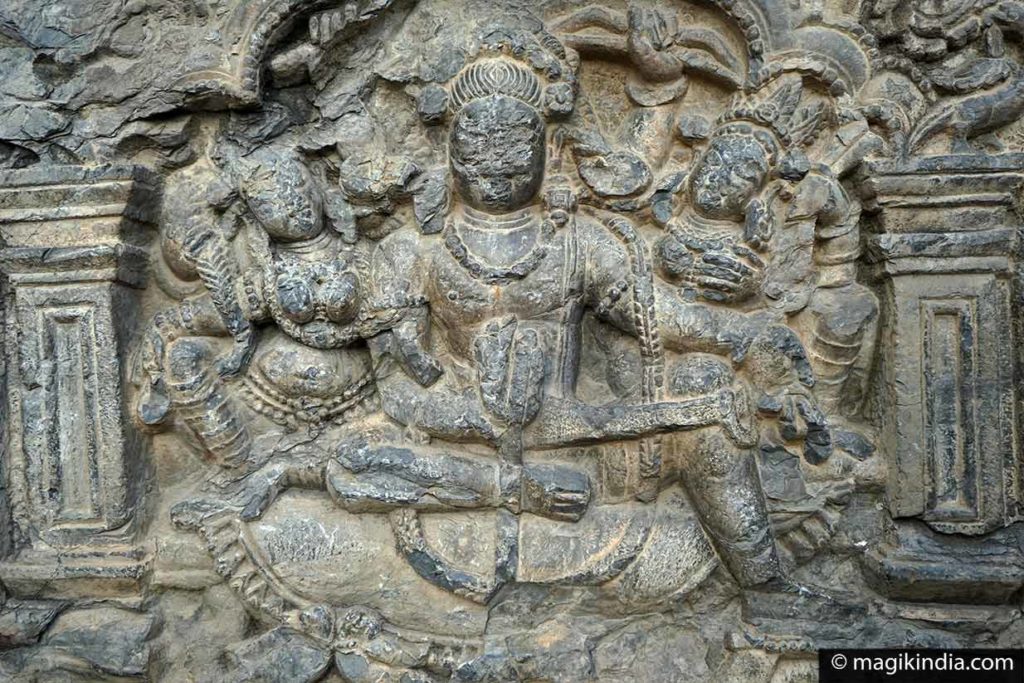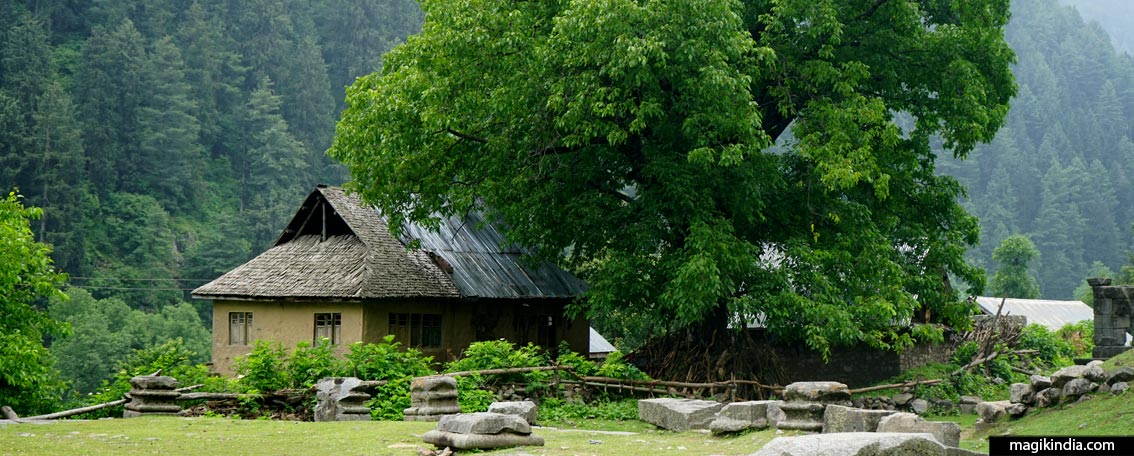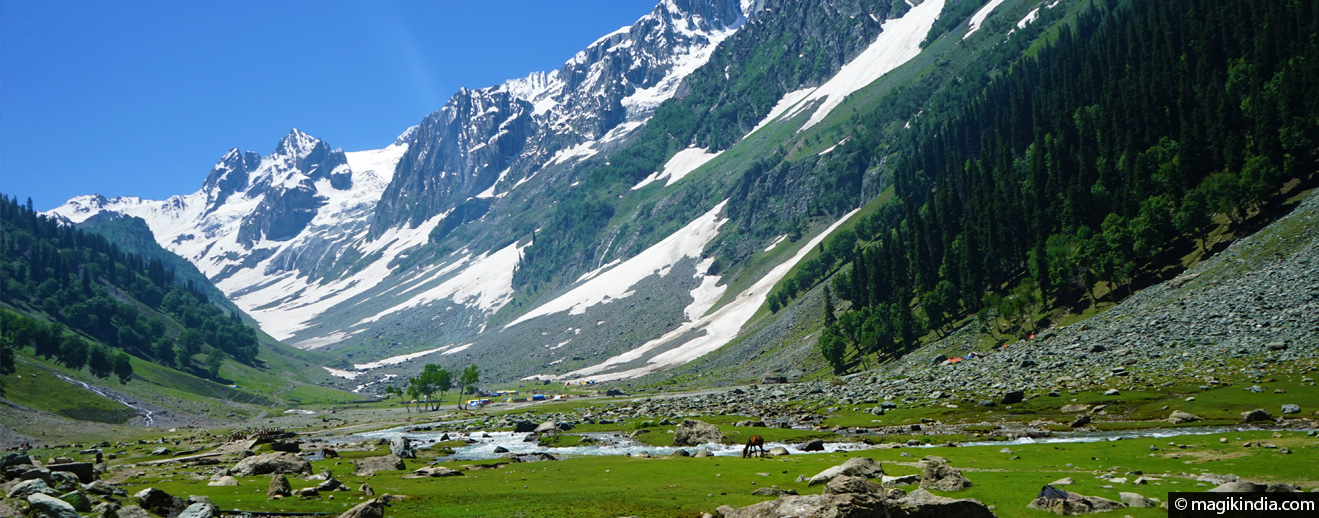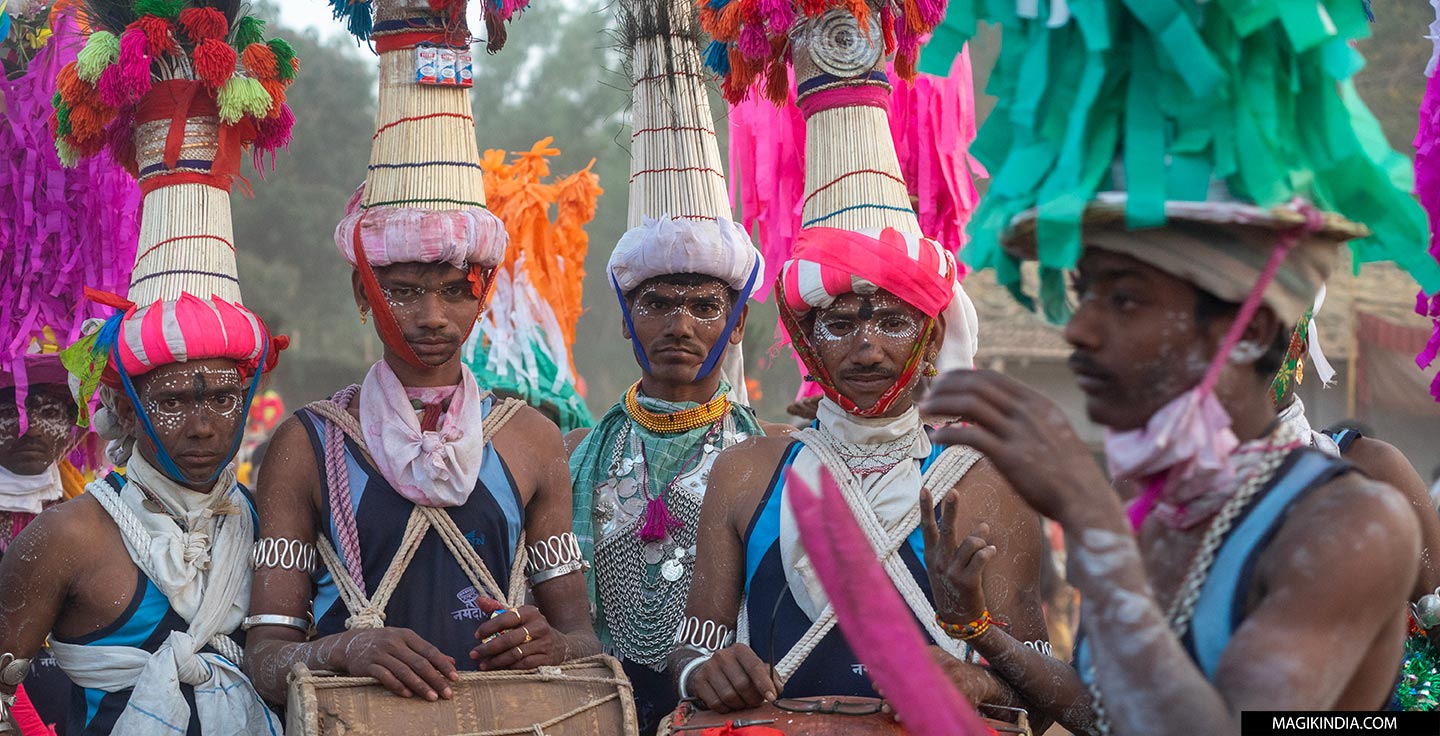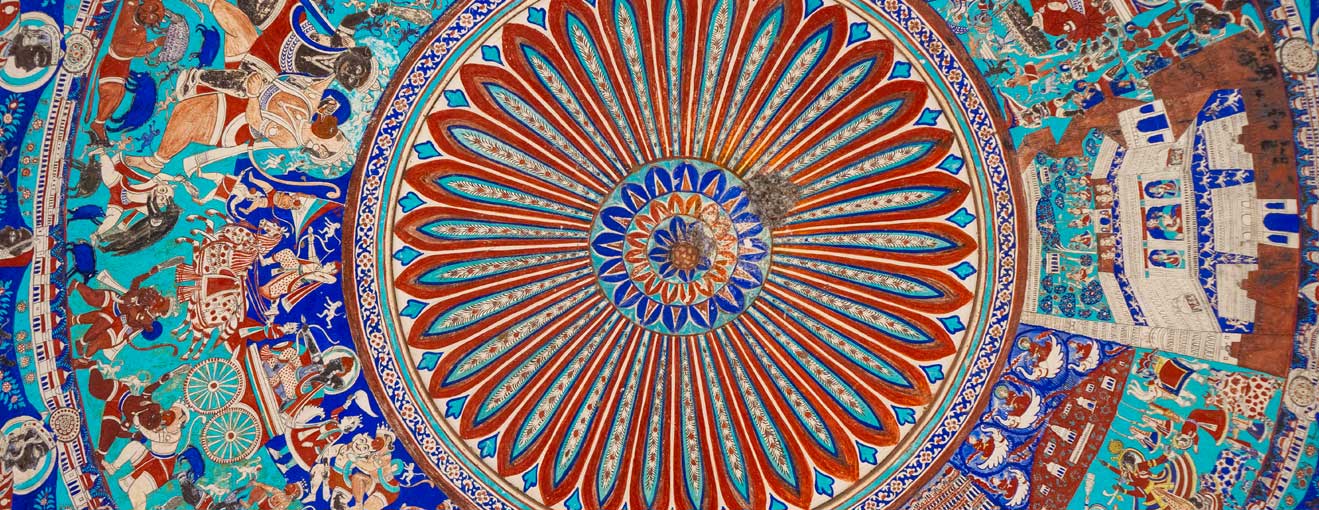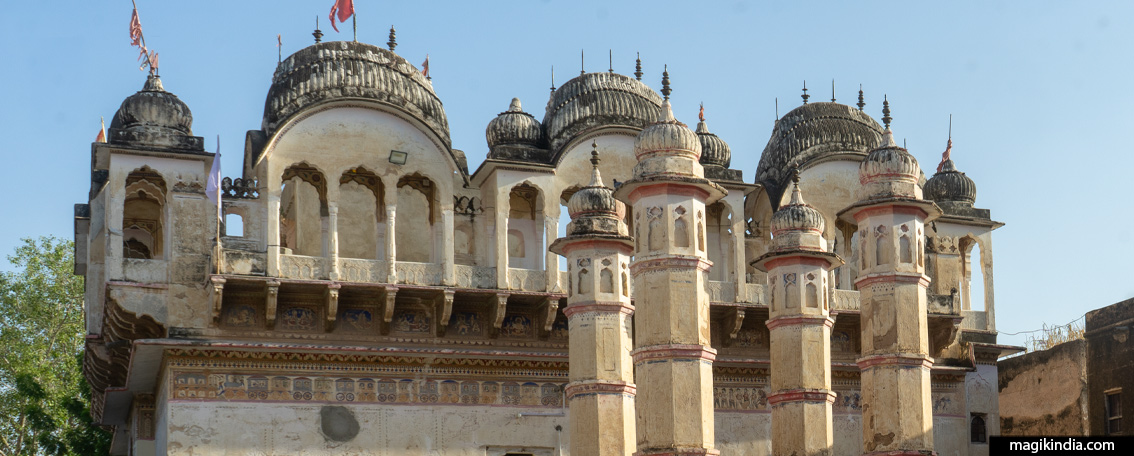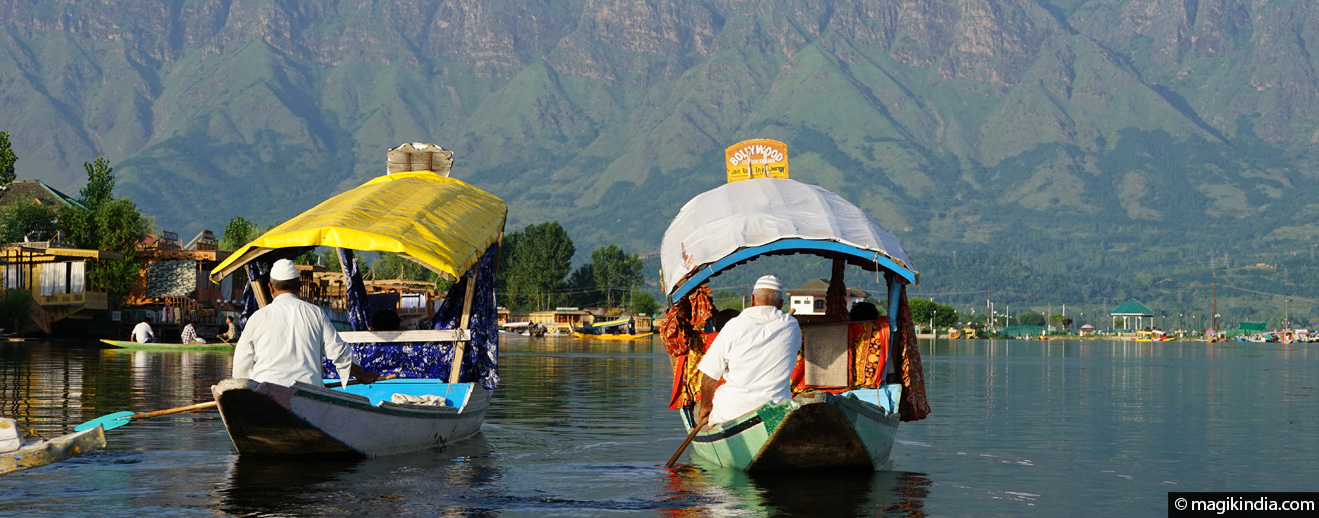
Srinagar, the pearl of the Kashmir valley
Who could fail to fall for Srinagar, summer capital of Kashmir? The meandering, lotus-dotted lakes and the houseboats with their surprising air of Old England will immerse you in an irresistibly romantic mood while the Mughal gardens, fragrant with rose and magnolia, induce a more contemplative frame of mind. While you sip a delicious cardamom and cinnamon tea and watch like on the lake, you’re likely to be thinking that next summer the place will tug at your heartstrings and pull you back again.
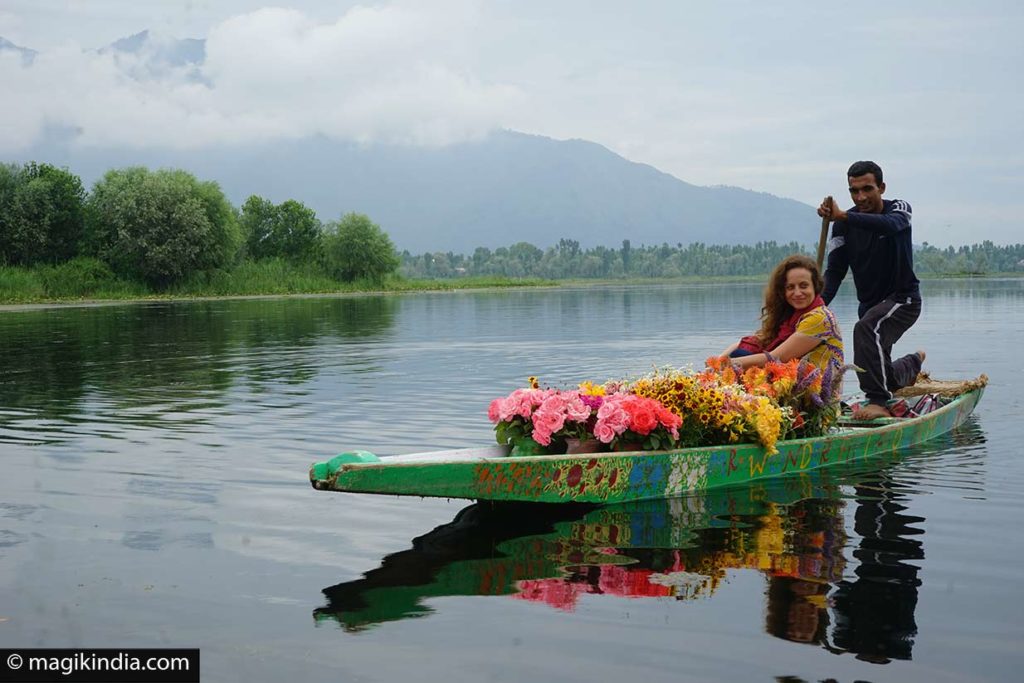
Srinagar boasts a very particular cultural heritage. Its holy places reveal the cultural and religious diversity of a town that was once one of the key centres of Sanskrit learning and where a flourishing Sufism nurtured traditions of tolerance, harmony and brotherhood.
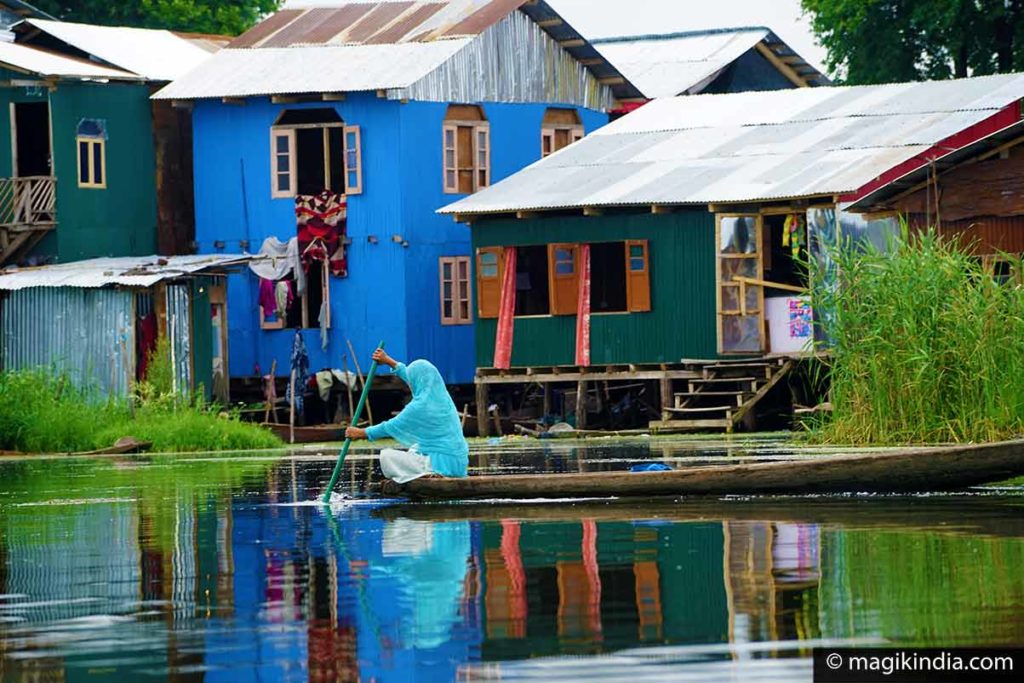
Festivals not to miss
Tulip Festival

The tulip festival is held in Siraj Bagh or the Indira Gandhi Memorial Tulip Garden, on the foothills of the Zabarwan Range in Srinagar. It is referred to as Asia’s largest tulip garden
The Srinagar Tulip Garden is spread over a whopping 5 hectacres of land, all of which will be needed as more than 300,000 new bulbs of 8 new varieties of flowers.
The Kashmir Tulip Festival runs around mid-April. In addition to the flower exhibitions, visitors can also take part in cultural programs, taste traditional Kashmiri foods, purchase local handicrafts and more.
Shikara festival

The two-day festival of the shikaras, the famous boats of Srinagar, takes place on Lake Dal in April. It has been introduced to promote Kashmiri cultural heritage and boost tourism. The programme includes shikara boat races, kayak polo matches, dance shows and music. The local floating markets add their touch of colour to the event.
And now, Let’s visit Srinagar!
Dal & Nageen lakes, Houseboats and Shikaras
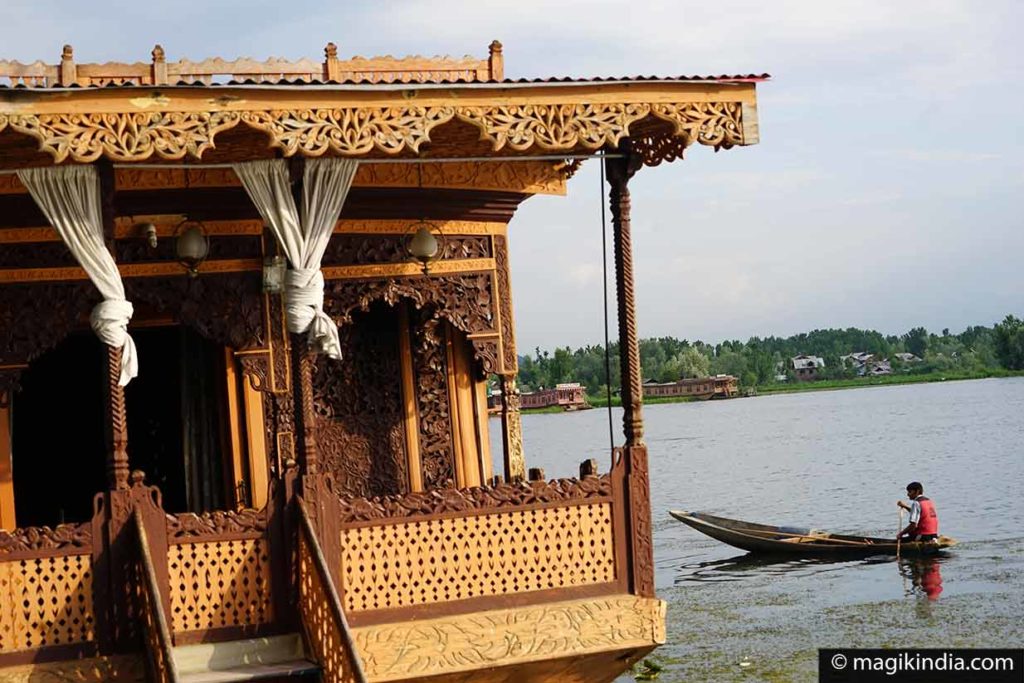
Srinagar’s main attraction is its many lakes. These are where tourists congregate, usually opting for a stay on one of the typical houseboats. Unlike their Kerala equivalents, Srinagar’s houseboats are usually stationary. Most are moored around Lake Dal and Lake Nageen.
Some very elegant-looking houseboats were built in the days of the Raj; others are more recent.
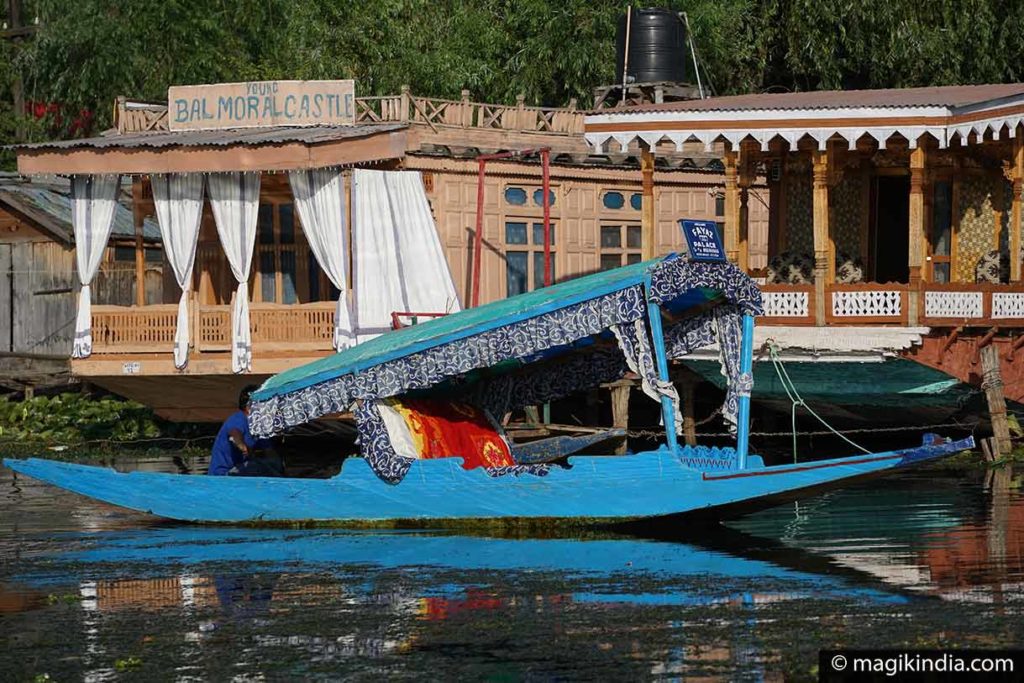
The origins of the Houseboats in Srinagar date back to the late 19th century. The boat-dwelling Hanji community of Srinagar started building floating homes or houseboats for English visitors and residents. The king of Kashmir Sri Gulab Sing didn’t allow British people to buy land or do any construction activity in the valley. Then small house boats were constructed to keep on Dal lake.
A stay on one of these wooden barges is an absolute delight. They are very cosy inside, with Oriental carpets and finely carved walnut panelling, two or three bedrooms and sometimes a lounge and kitchen.
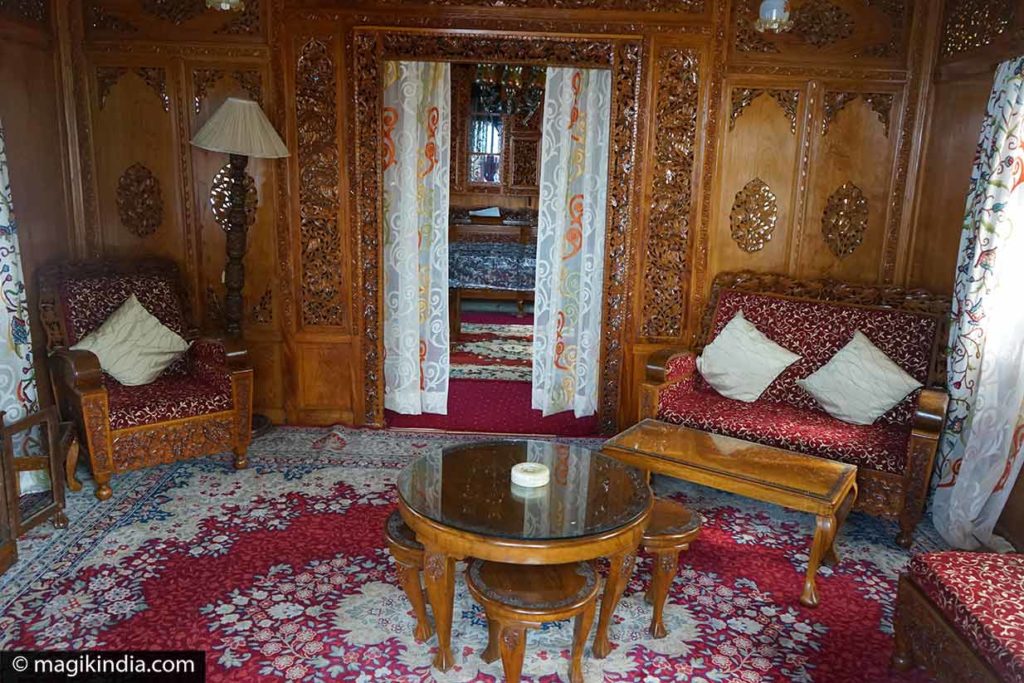
The life of the lake, with floating traders coming by one after another and the views of the surrounding mountains make your stay perfect.

Some of these boats are moored by small islands in the lakes and can be reached by small covered boats called sikharas. These decorative boats will also take you around Srinagar’s various lakes.
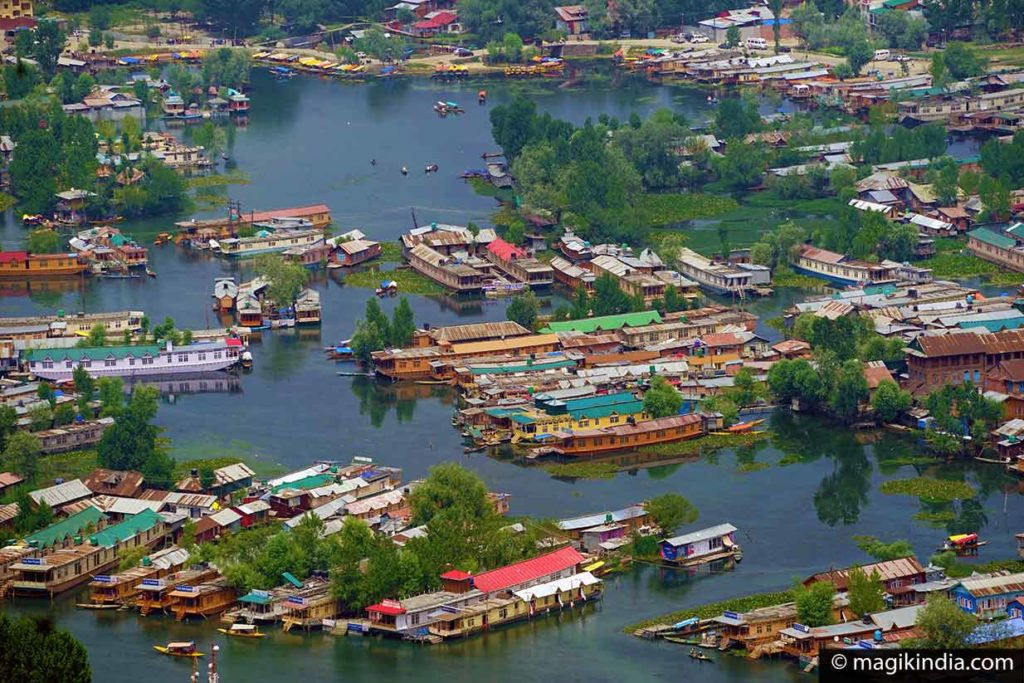
Dal Lake, “jewel of Srinagar”, is the town’s largest lake and the second largest in the state (shore length 15.5 km). It consists of four parts, Gagribal, Lokut Dal, Bod Dal and Nageen, though Nageen is often regarded as a separate lake. Most tourists unpack their suitcases on Dal Lake; from the simple boat-motel at 10 euros to the luxurious houseboat, you are spoiled for choice!
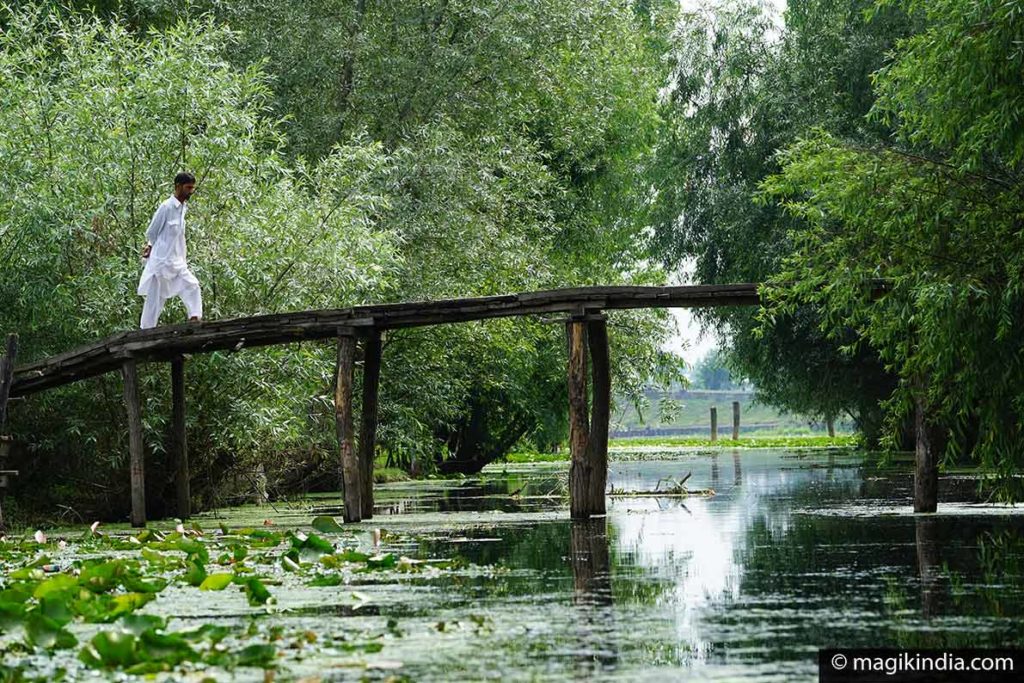
Dal Lake can become crowded; for travelers in search of tranquility and authenticity, I advise you to “moor” at the neighboring lake instead, that of Nageen, which has remained wild.
The Shikara rides on this lake allow you to be close to nature and to discover the real life of the Kashmiris whether they are fishermen, farmers or collectors of lotus stems.
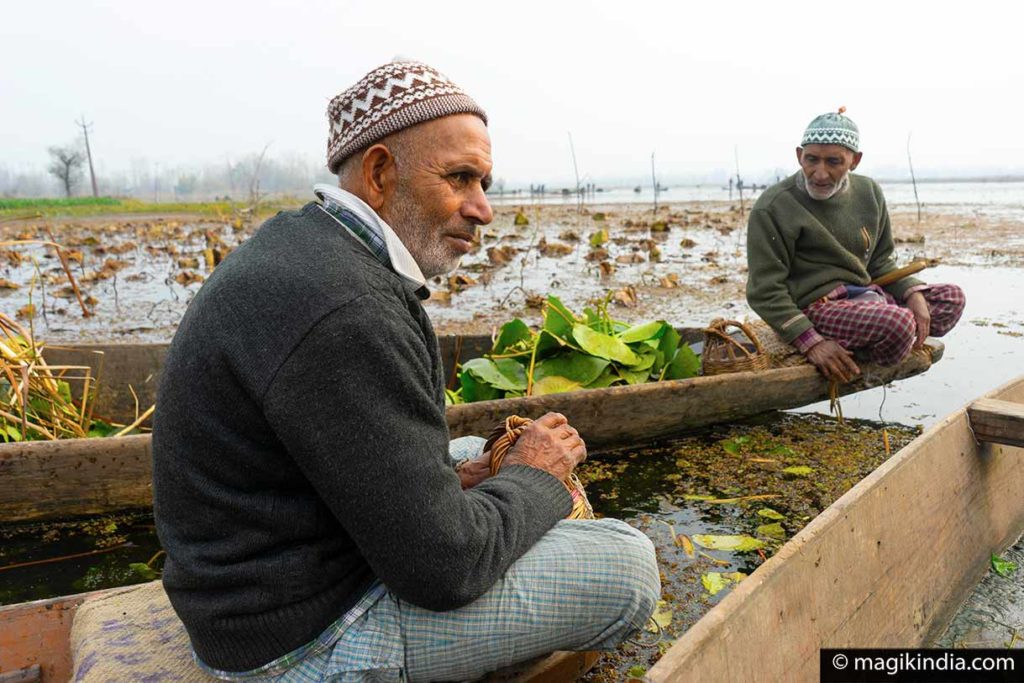
In the evening, while delighting yourself with a Kahwa tea accompanied by ctoz bread spread with salted butter, you will be in the front row to attend the most beautiful spectacle: the sunset over the foothills of the Himalayas.
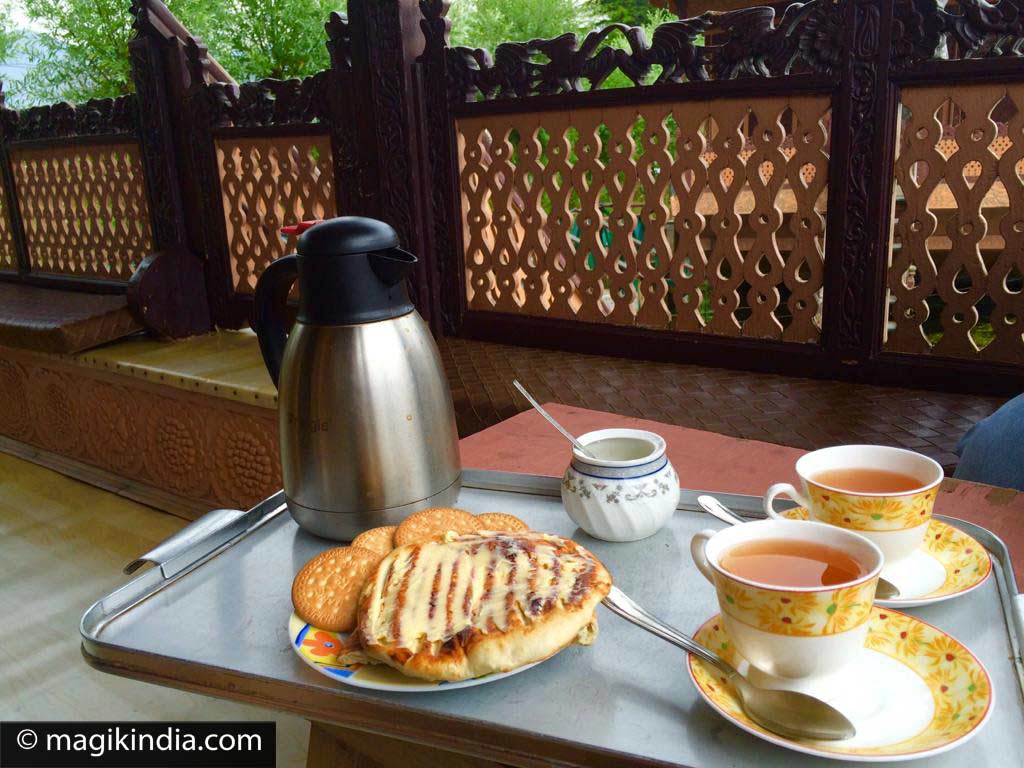
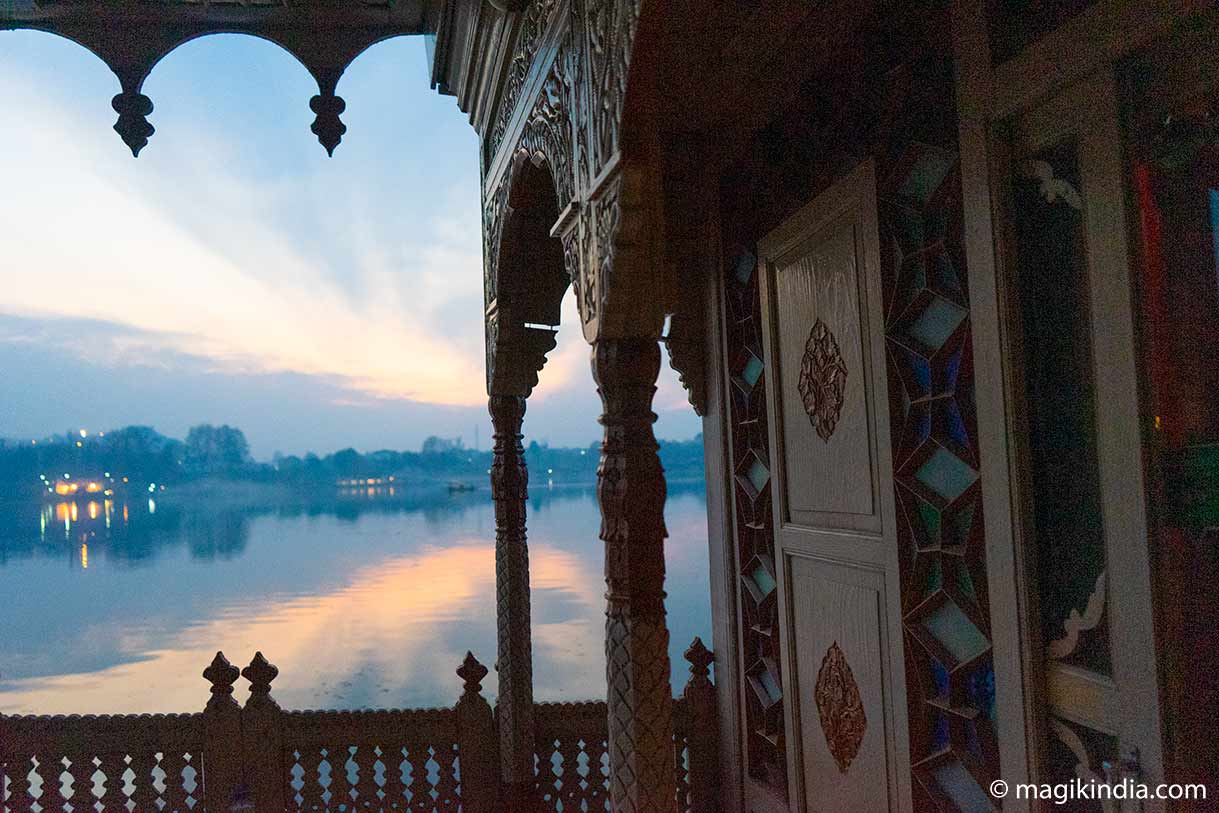
Moghols gardens : Shalimar bagh et Nishat bagh
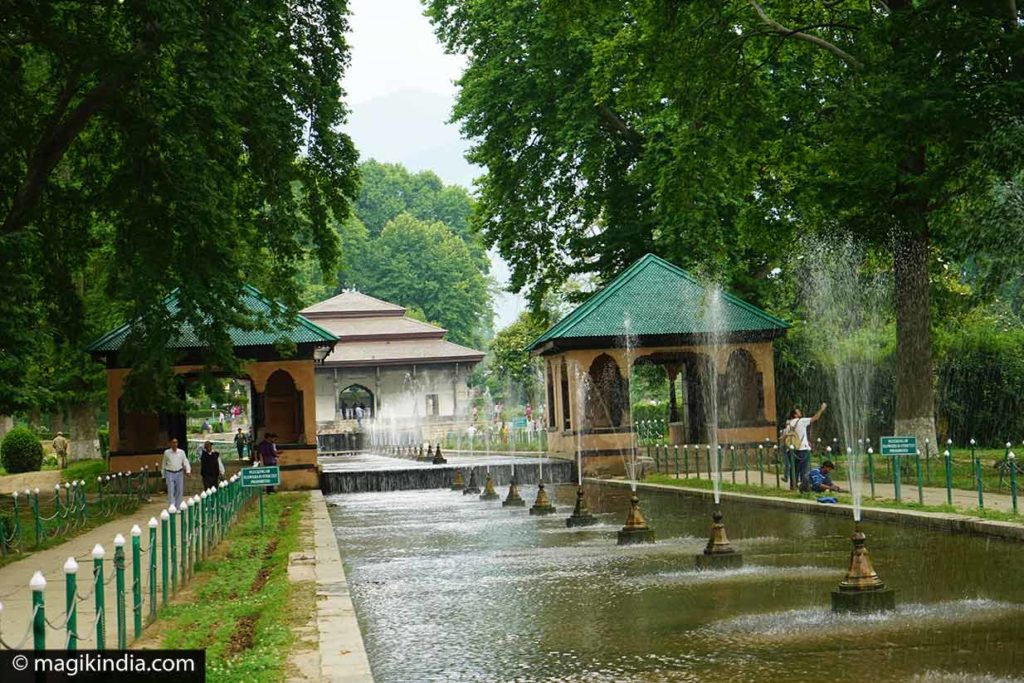
Shalimar Bagh is a terraced Mughal garden on the right bank of Lake Dal, connected to the lake by a canal. The garden was designed in 1619 by the Mughal emperor Jahangir for his queen Nur Jahan. It is considered a gem of Mughal horticulture.
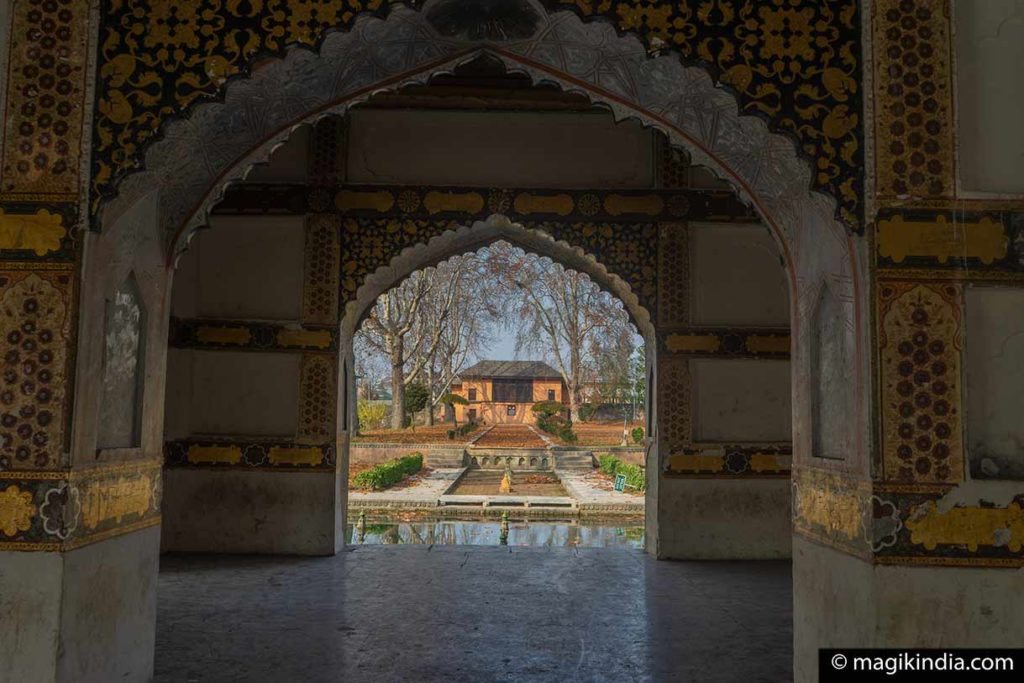
But it is also said that the garden originated with Pravarsena II who founded the city of Srinagar and reigned from 79 CE to 139 CE. He built a small cottage he called Shalimar, which means “abode of love” in Sanskrit.
The Mughal emperor Jahangir, enchanted by the place, transformed it into a 12 hectare Persian style garden made on a square plan with four arms radiating from the fountain. It is bordered by plane trees and abounds in deliciously fragrant roses and magnolias.

The other Mughal garden, Nishat Bagh, is located three kilometers from Shalimar’s garden on the eastern shore of Dal Lake. Nishat Bagh, in Urdu language, means “garden of joy”.
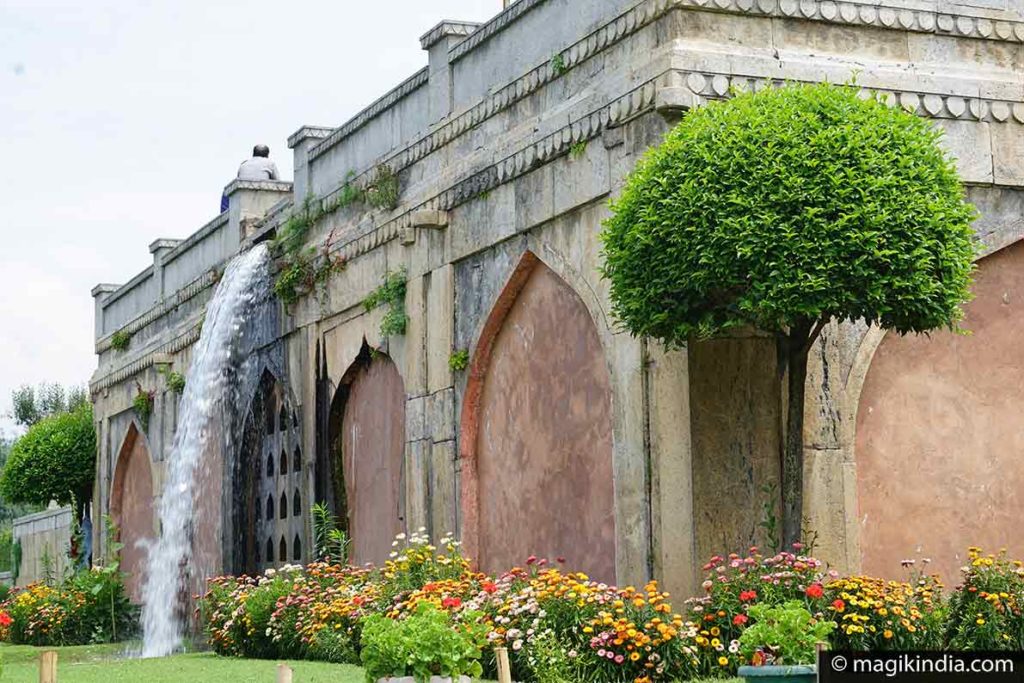
Designed in 1633 by Asif Khan, elder brother of Mughal Empress Nour Jehan, this terraced garden is the second largest Mughal garden in the Kashmir Valley after Shalimar.

The two gardens are particularly beautiful in September – October when nature is adorned with ocher and gold. Cashmere is one of the few places in India where you can enjoy the colors of autumn.
Hazratbal Mosque and Dargah Market
Hazratbal on the west bank of Lake Dal is considered Kashmir’s most holy Muslim shrine. It houses a relic, the Moi-e-Muqqadas, said to be a hair of the beard of the Prophet Mohammed.
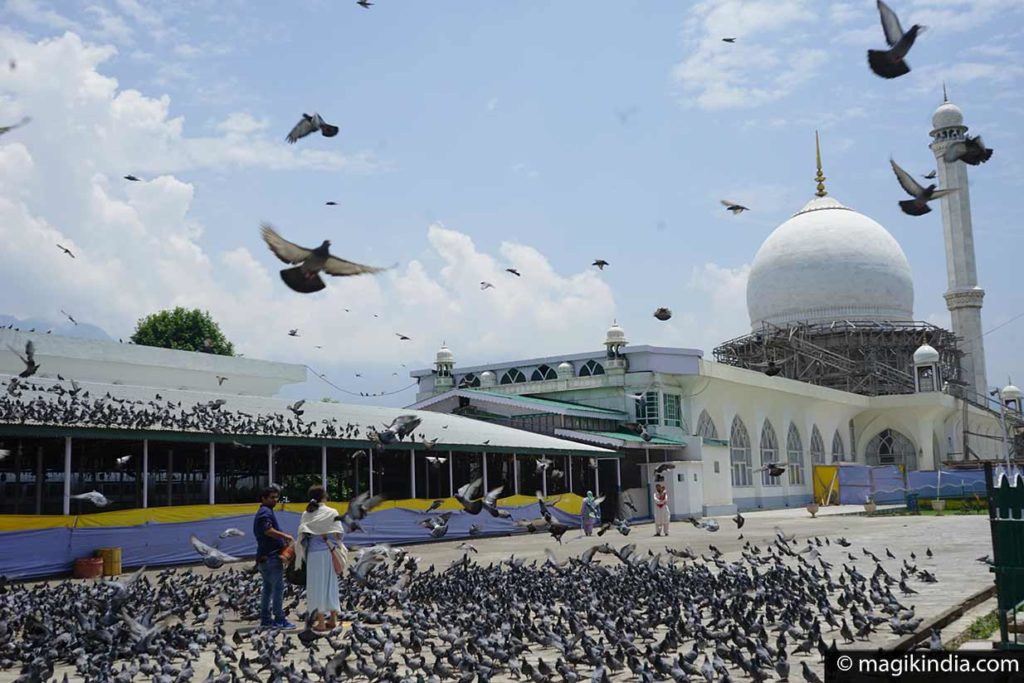
According to legend, the relic was brought to India by Syed Abdullah, who left Medina in Arabia and settled in Bijapur, near Hyderabad, in 1635. The relic then passed from hand to hand: from Khwaja Nur-ud-Din Eshai, a wealthy merchant, it passed to the Mughal emperor Aurangzeb, then came back to Kashmir in 1700 and finally to the descendants of Nayat Begum, daughter of Khwaja Nur-ud-Din Eshai. The relic disappeared mysteriously in 1963 but after mass protests and appeals even from the Indian prime minister Jawaharlal Nehru it was found again in 1964.
The Moi-e-Muqqadas (holy relic of the Prophet Mohammed) is only shown to the public on certain holy days. The mosque is not open to tourists but you can go into the first courtyard.
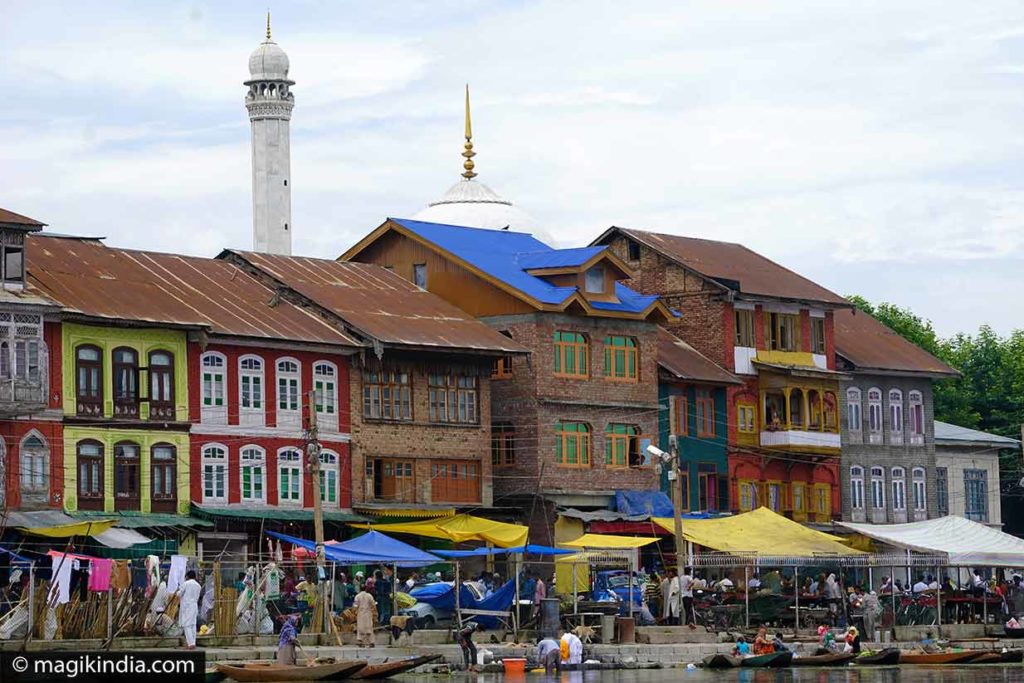
Hazratbal is the only marble mosque in Srinagar and the only one to have a dome. The others are built in the pagoda style typical of Kashmir.
For a splendid view of the mosque I suggest you hire a sikhara boat on Lake Nageen and pull into shore at the shrine. You’ll enjoy the lively mosque market (Dargah Market) where all kinds of Kashmiri specialties are on sale including the famous lotus stem pickle (achaar).
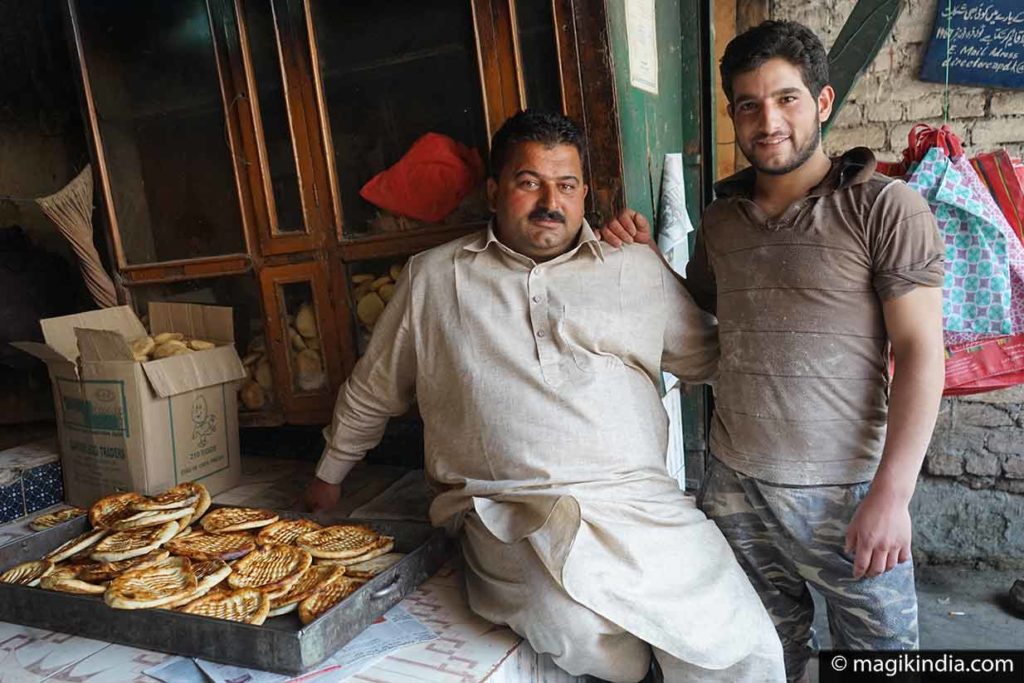
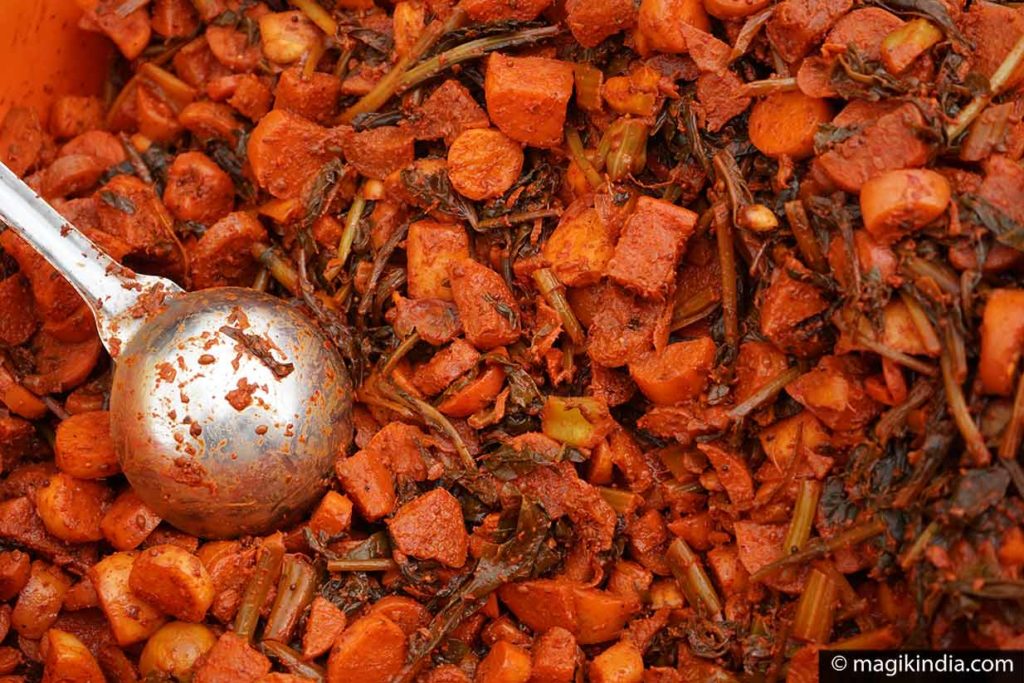
Srinagar Old Town
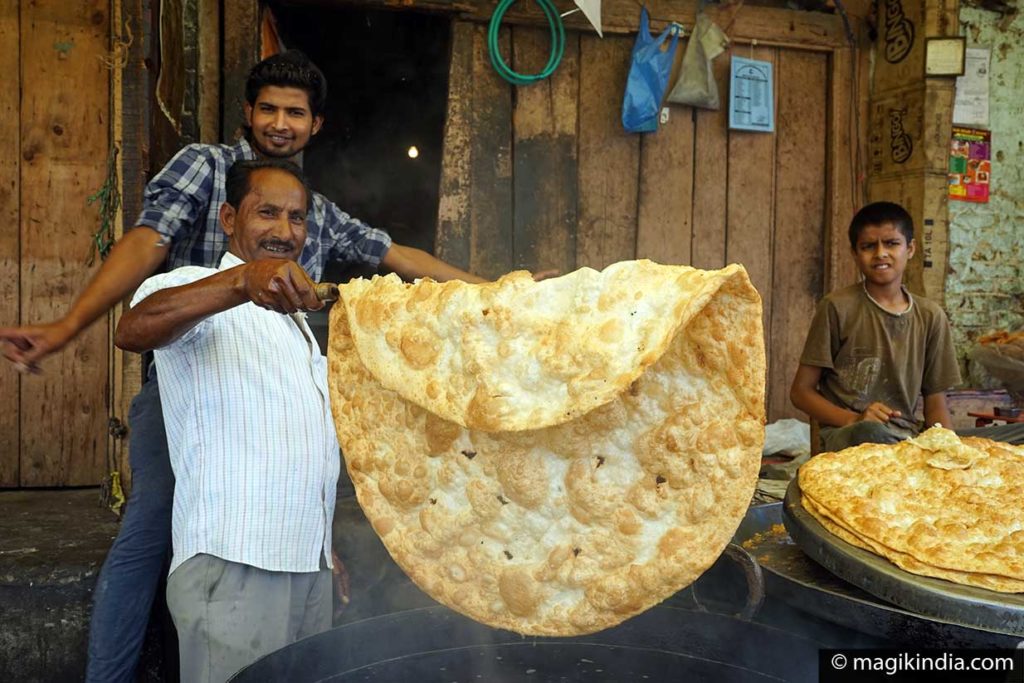
It’s always a fresh pleasure to stroll around the old quarters of towns; it’s in the old town that you find a city’s heart and authenticity. Srinagar is no exception.
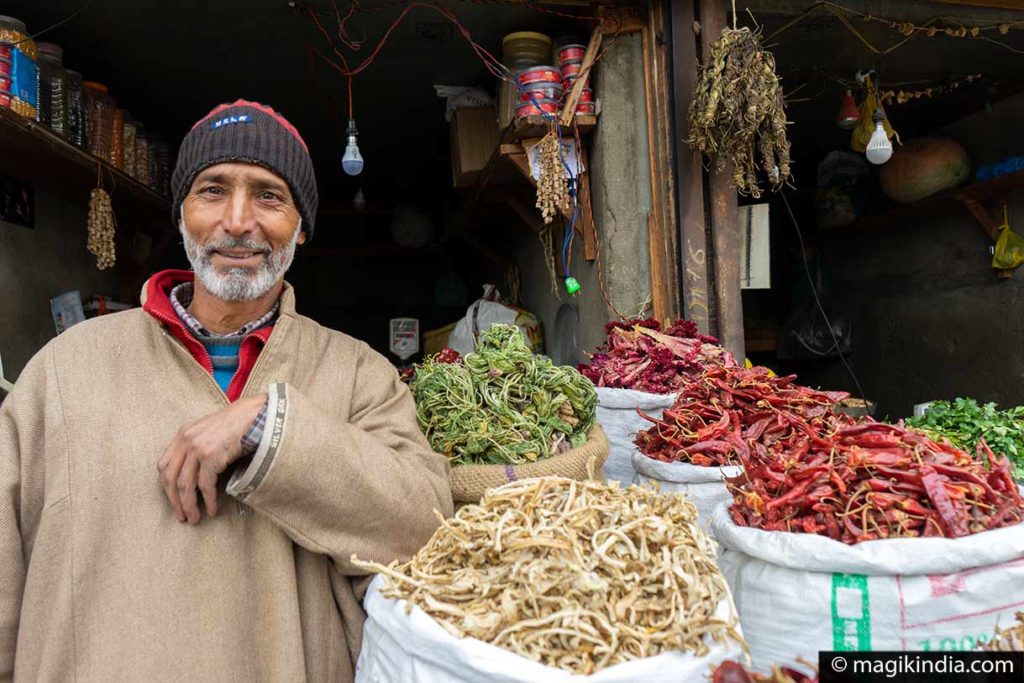
Old wooden buildings crumbling under the weight of time, shops selling spices and copper kitchenware, bakers cooking delicious Kashmiri breads in tandoori ovens, all kinds of pastries oozing with syrup … all your senses awaken as your soak up the essence of the East.
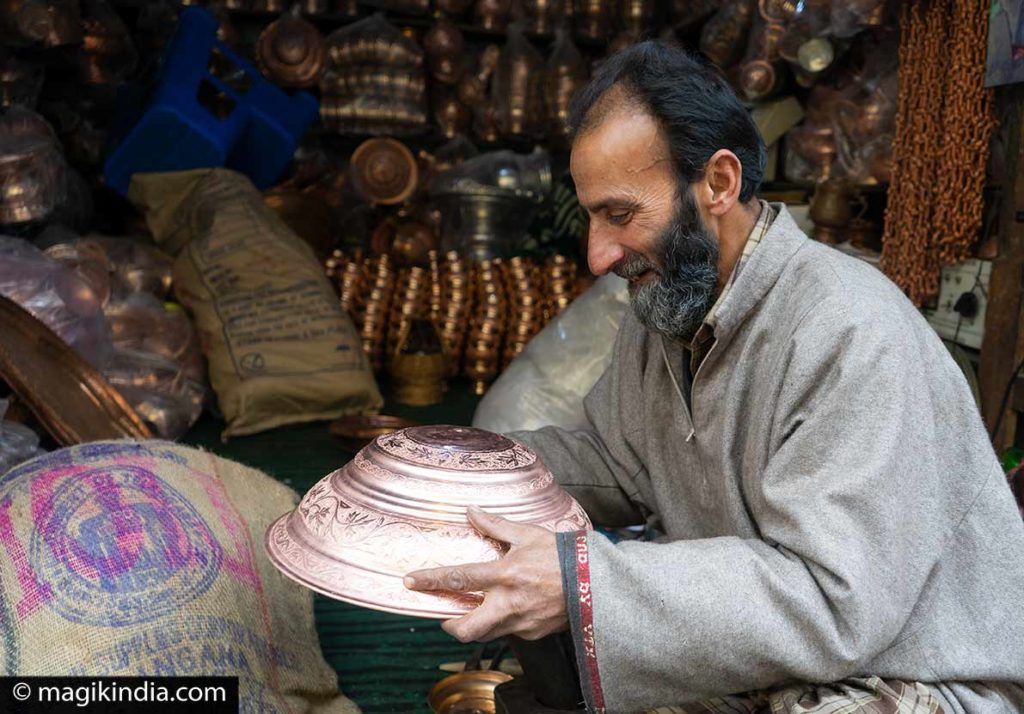
Jama Masjid Mosque (old town)
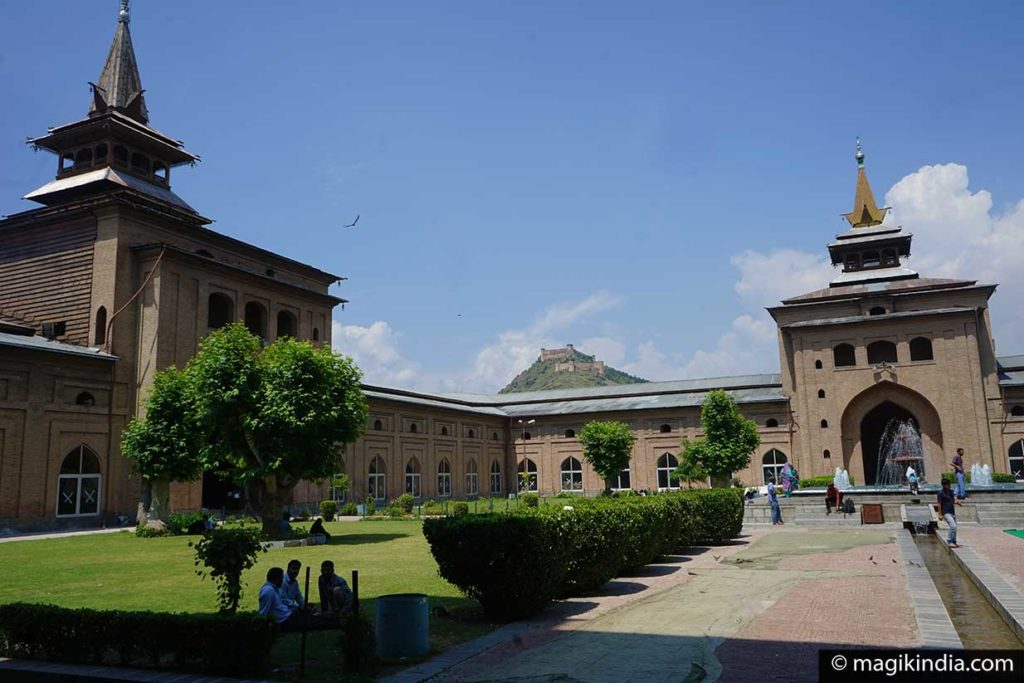
The Friday mosque (Jama Masjid) with its rather original architecture is in Nowhatta, in the centre of the old town. It was originally built by Sultan Sikander in 1385, then enlarged, and destroyed by fire several times. The existing mosque dates from 1674.
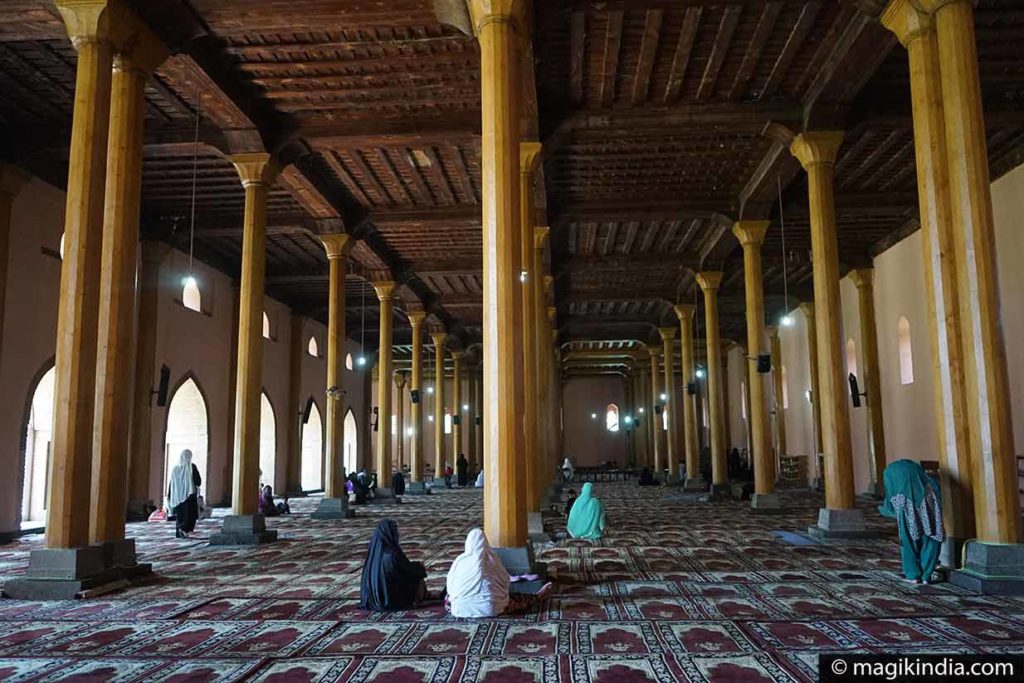
It is known as a very holy place and also renowned for the elegance of the building and its unusual construction: built on a square plan with four pagoda style minarets it has over 300 cedar wood columns. It can accommodate 30000 worshippers at a time. A small square garden in the centre of the mosque with a fountain for ablutions adds to the charm of the place.
Tourists are welcome but descent dress is required and women must cover their heads.
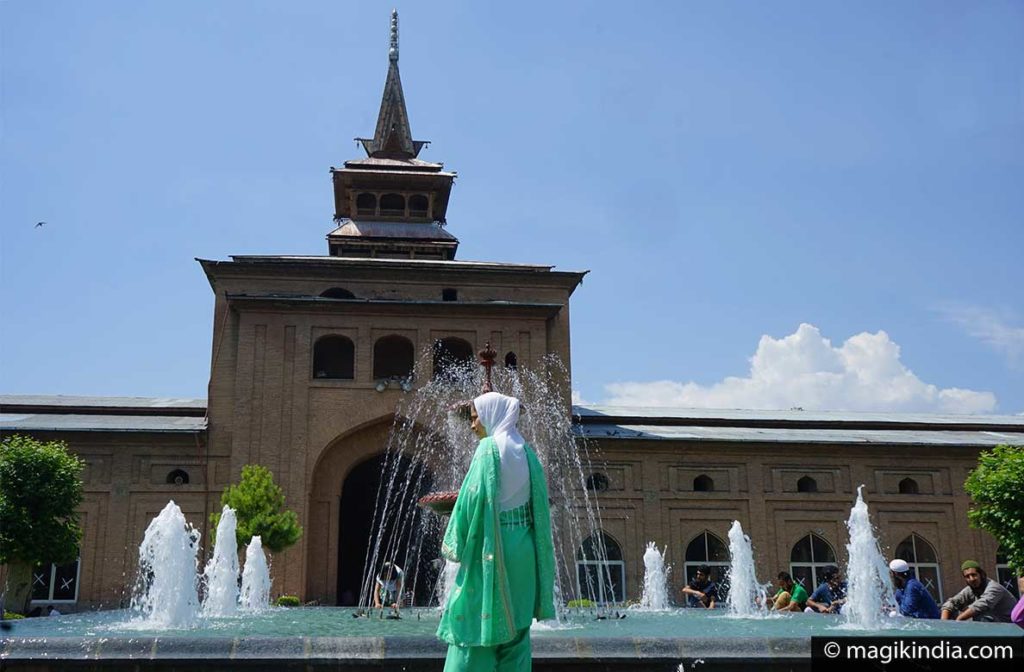
Badshah tomb (old town)
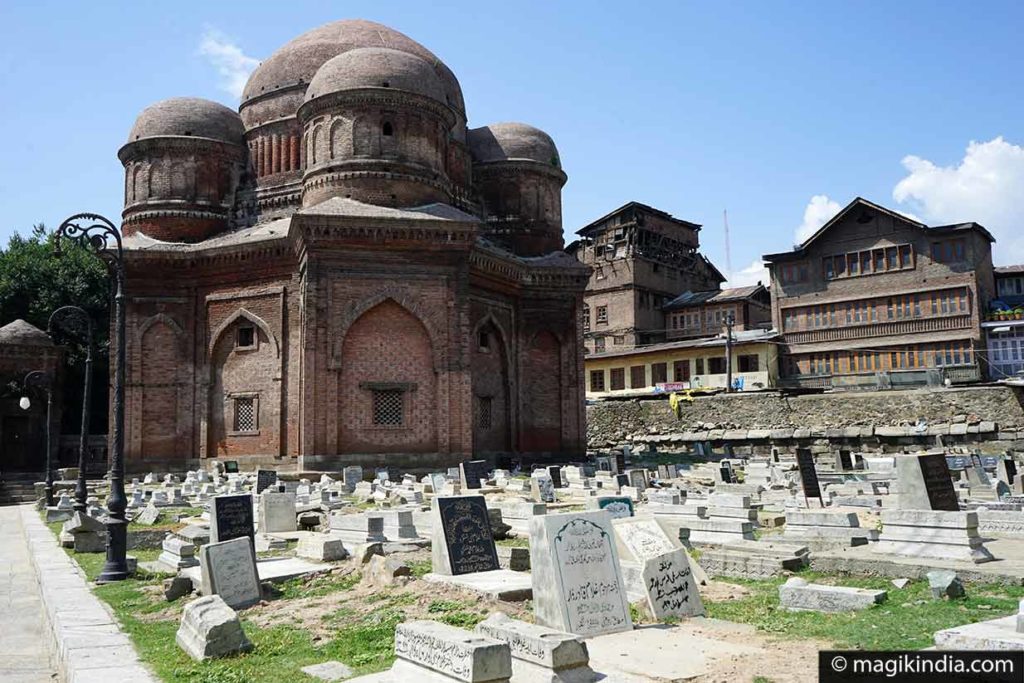
This 15th-century brick tomb in the old town, surmounted by five domes, is the final resting place of the mother of Sultan Zain-Ul-Abidin (1420-1470 CE.), whose people respectfully called him Bud Shah (“great king”) during his just and peaceful reign
Khanqah Shah-I-Hamadan Mosque (old town)
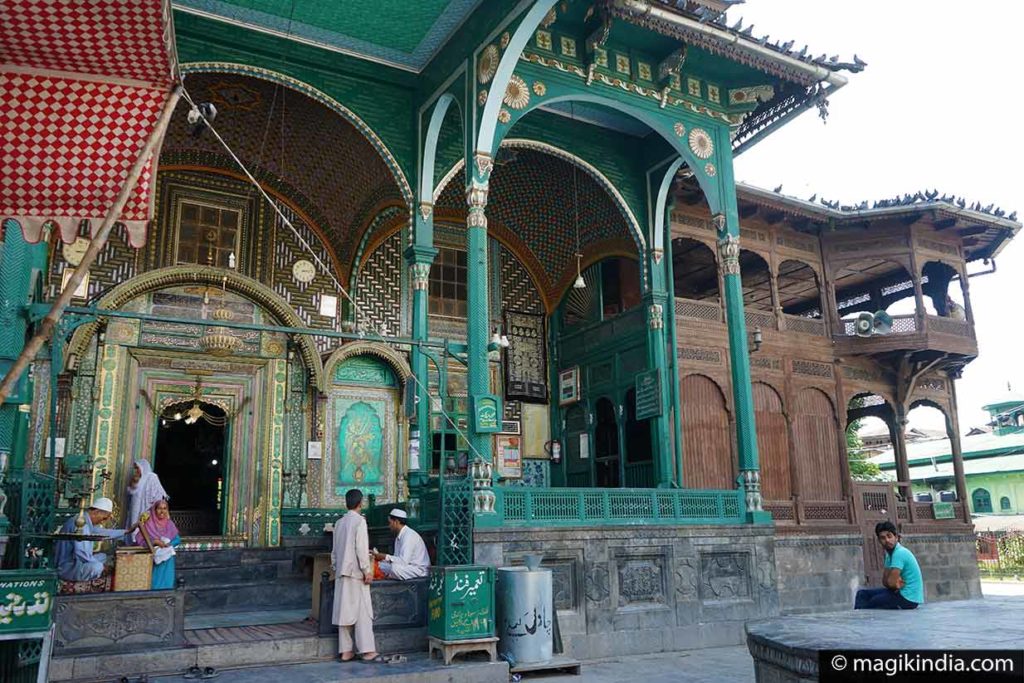
A little gem of a mosque, my absolute favourite, on the bank of the Jehlum in Srinagar old town. Also called Khanqah-e-Mualla and the Khanqah of Shah Hamdan, it is one of the oldest Sufi shrines in Kashmir and is of great spiritual significance.
It was built in 1395 by Mir Sayyid Mohammad Hamdaani in homage to his father Hamdani (Shah Hamdan). Fire claimed the mosque several times and part of the existing structure dates from the 18th century.
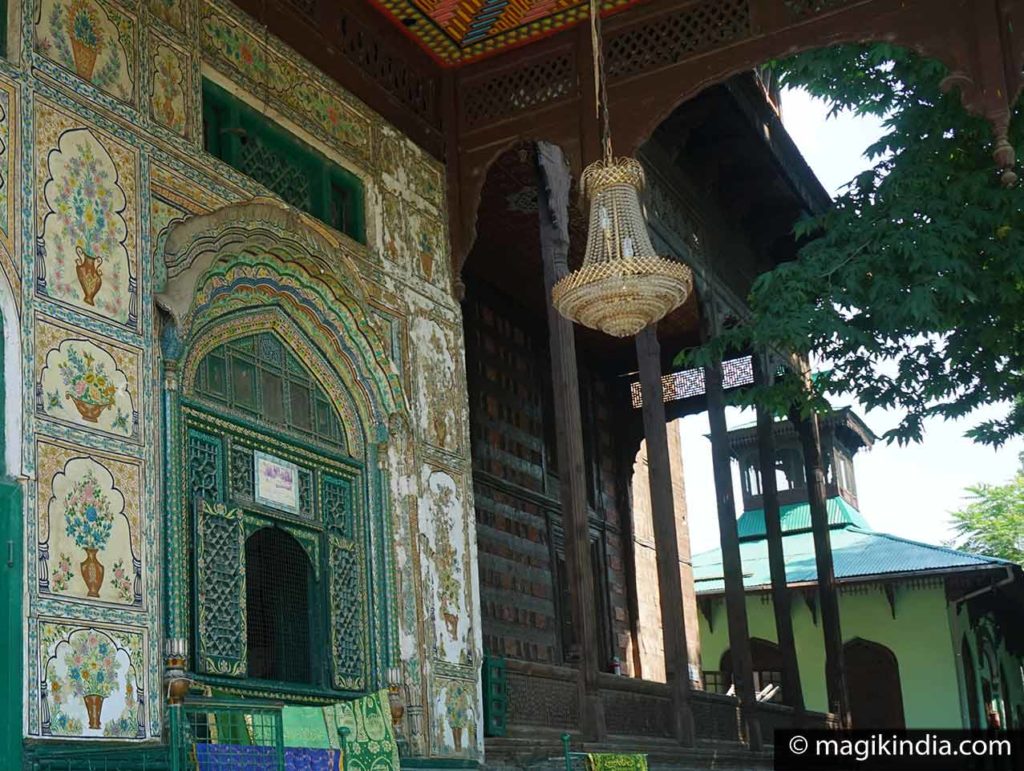
Shah-e-Hamdan was a Persian Sufi poet, a leading Muslim scholar and a social reformer. As well as preaching, he was a man of letters and wrote hundreds of pamphlets in Arabic including his well-known treatise Zakhirat-ul-Maluk, which sets out the rules for good governance of a country.
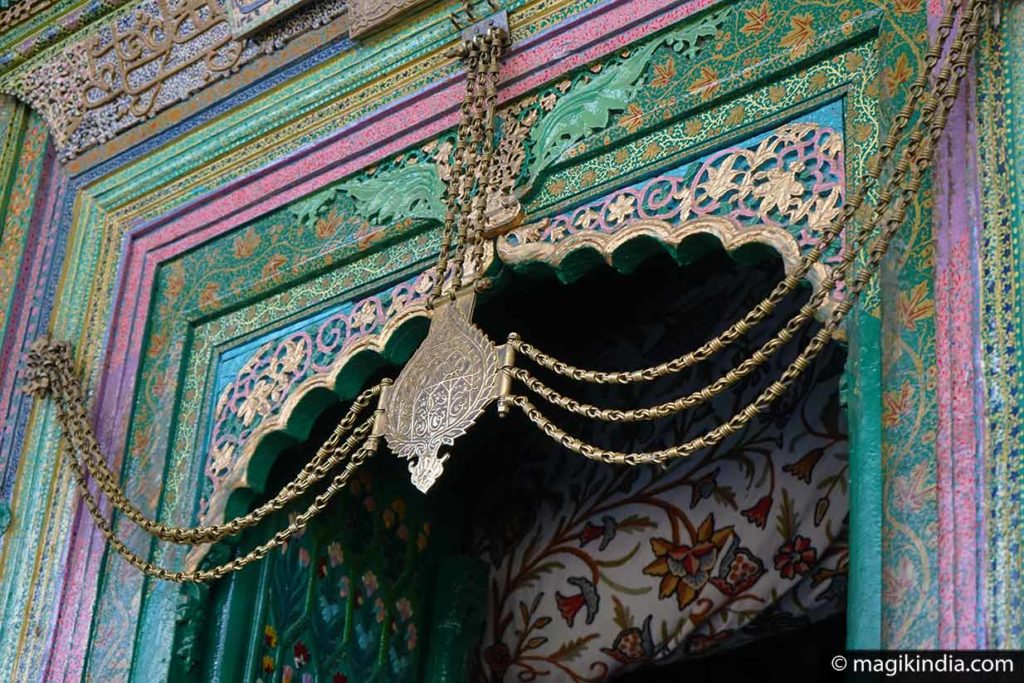
The interior of the mosque is remarkable for its marvellously carved wooden panels, produced by the best Kashmiri craftsmen using time-honoured techniques. The outside walls are decorated with glass and glazed tiles.
Non-Muslim tourists can go into the courtyard and tour the mosque but are not allowed into the main shrine, though you can get a glimpse of it from the door.
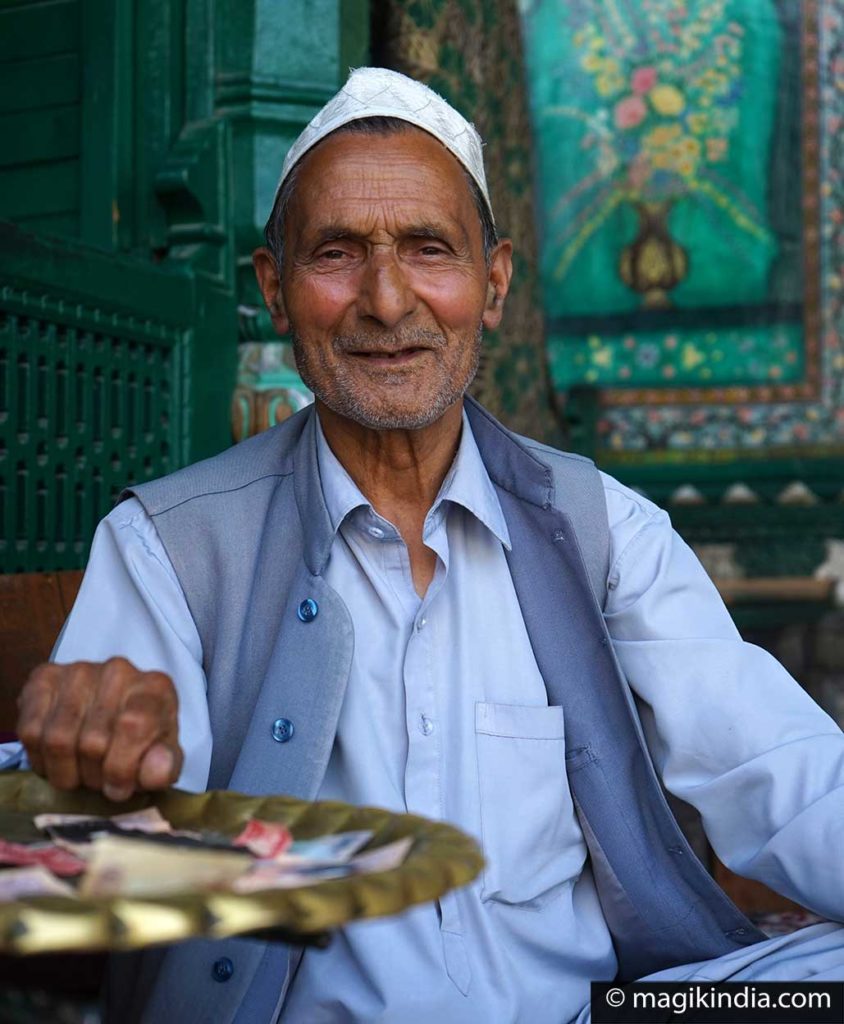
It is also worth stopping a moment to talk to the imam who “guards” the entrance. He is very open and cultivated and will talk about Sufism and current world events.
Patthar masjid (old town)
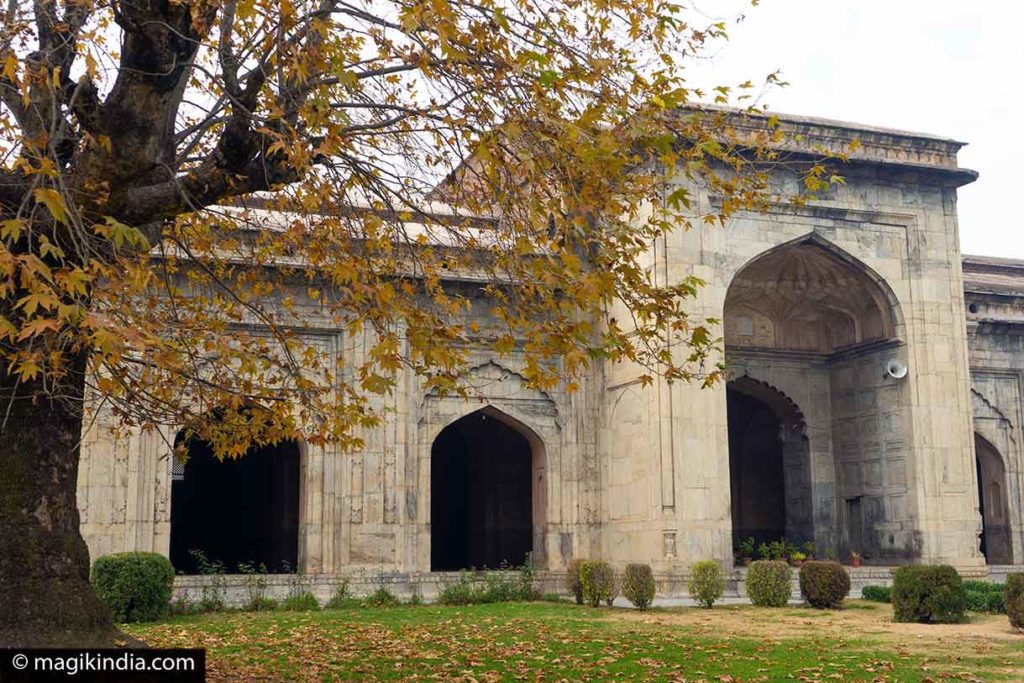
The small Patthar Mosque (stone mosque), which I discovered during my very last trip to Kashmir in 2018, is still little visited. Yet it is an integral part of the architectural and historical heritage of Srinagar.
Built in 1623 CE by the Mughal Empress Noor Jehan, wife of Jehangir (the 4th Mughal Emperor), it presents a very sober architecture contrasting with the other mosques of Srinagar. Here no pagoda roof but nine mehraabs (arches) carved from a local gray stone and alcove ceilings and niches on the four sides of the pillars of the prayer hall. The whole building is elegant and it is a nice stopover during your walk in the old town.
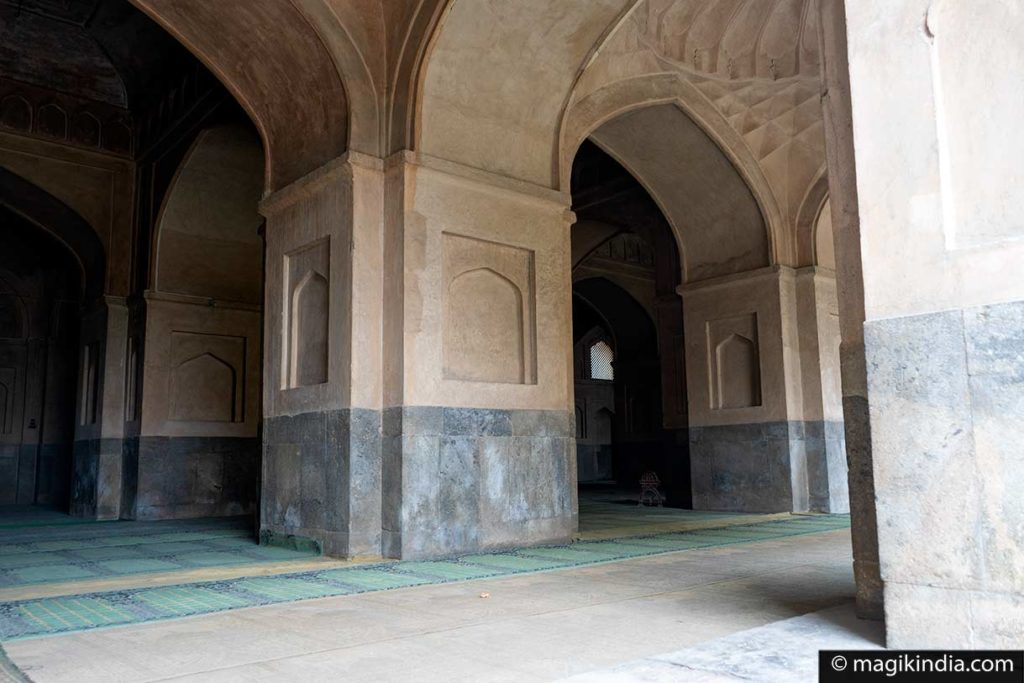
Musée Sri Pratap Singh (SPS)
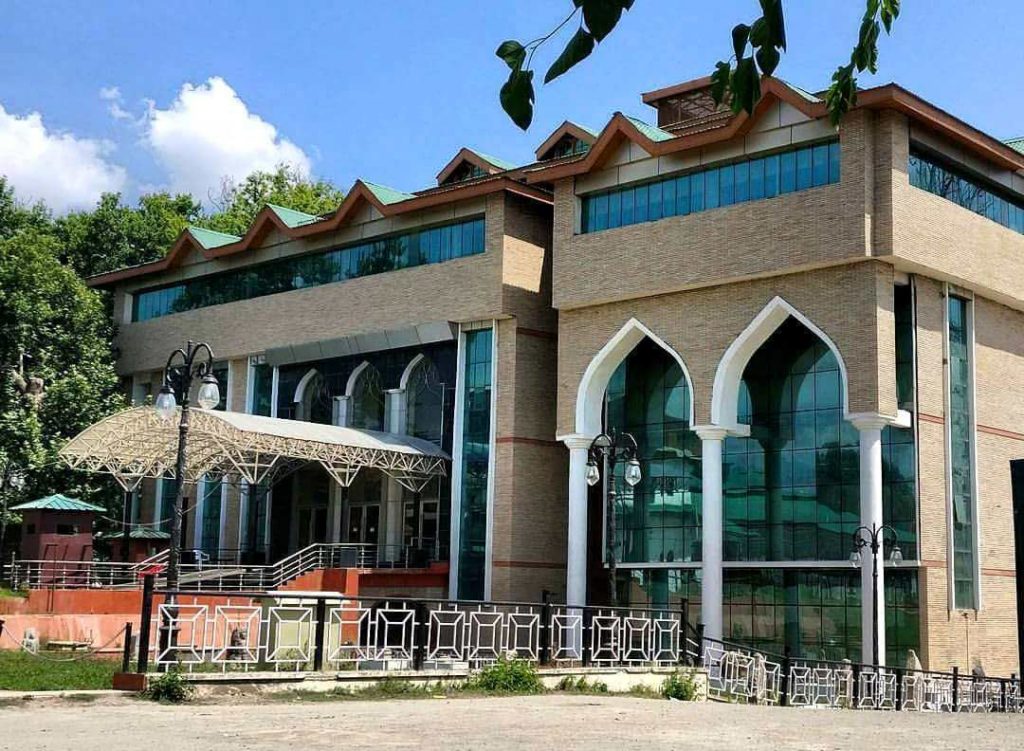
Located on the left bank of the Jhelum River, the Sri Pratap Singh Museum is not to be missed. I discovered it very recently and I must say it’s a nice surprise. It exhibits rare archaeological artefacts (numismatics, armory, paintings, textiles, Persian manuscripts …) from the Jammu – Kashmir region.
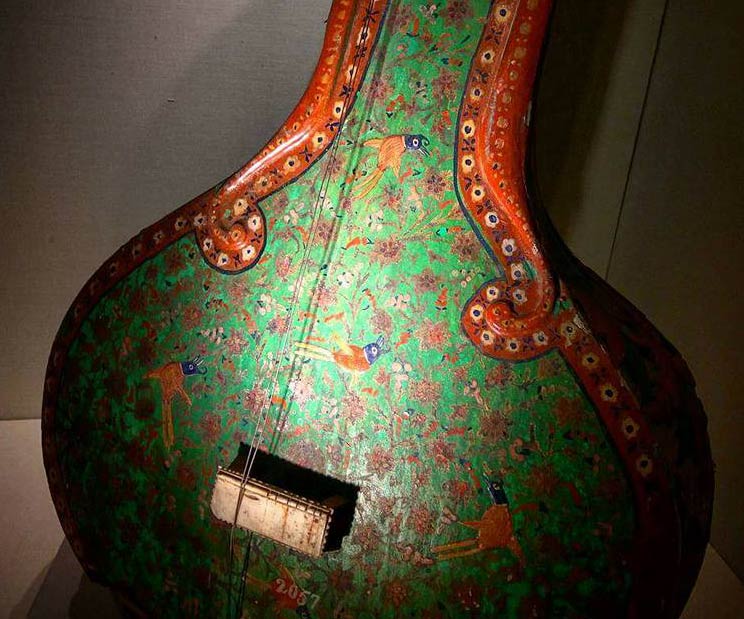
It was opened in 1898 by Maharaja Pratap Singh (hence its name), the Dogra ruler of Jammu and Kashmir. The museum that was formerly located in the Maharaja’s summer guesthouse was moved next door in 2017, to a modern building designed to be fire and earthquake resistant.
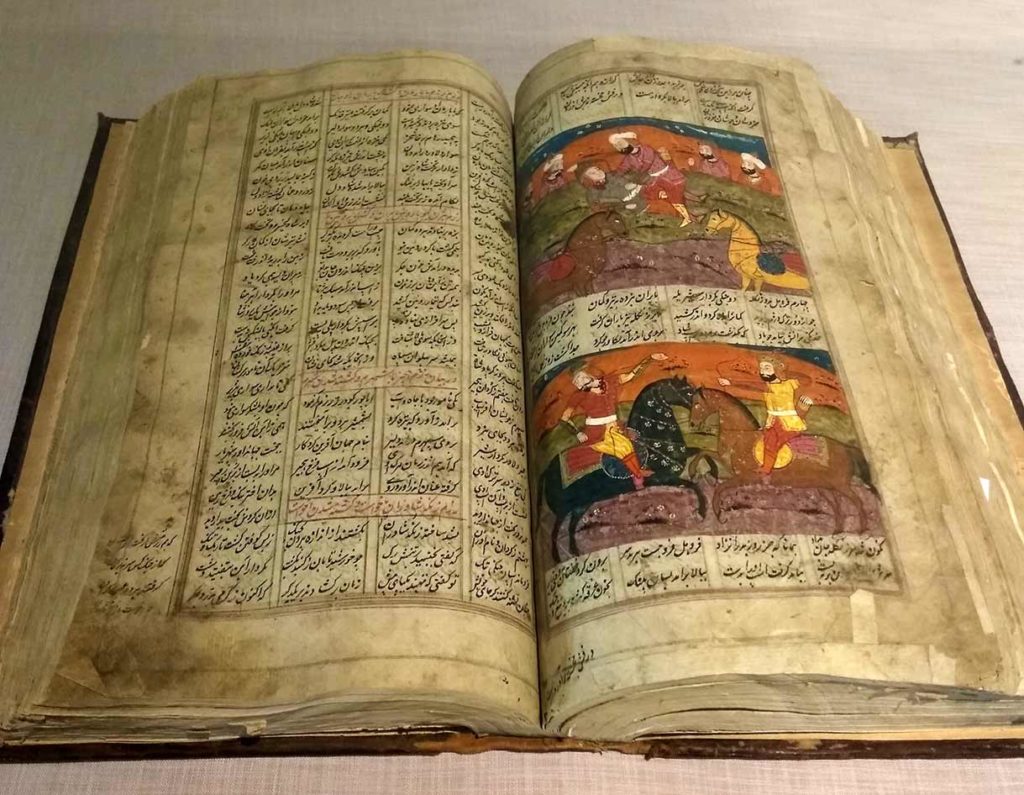
After visiting the museum, just opposite, take the Lal Mandi pedestrian bridge over the Jhelum River and walk along the Bund Road, where old barges are moored, to the Polo view market with its chic shops then stroll through the lively Lal Chowk market lined with all kinds of vendors.
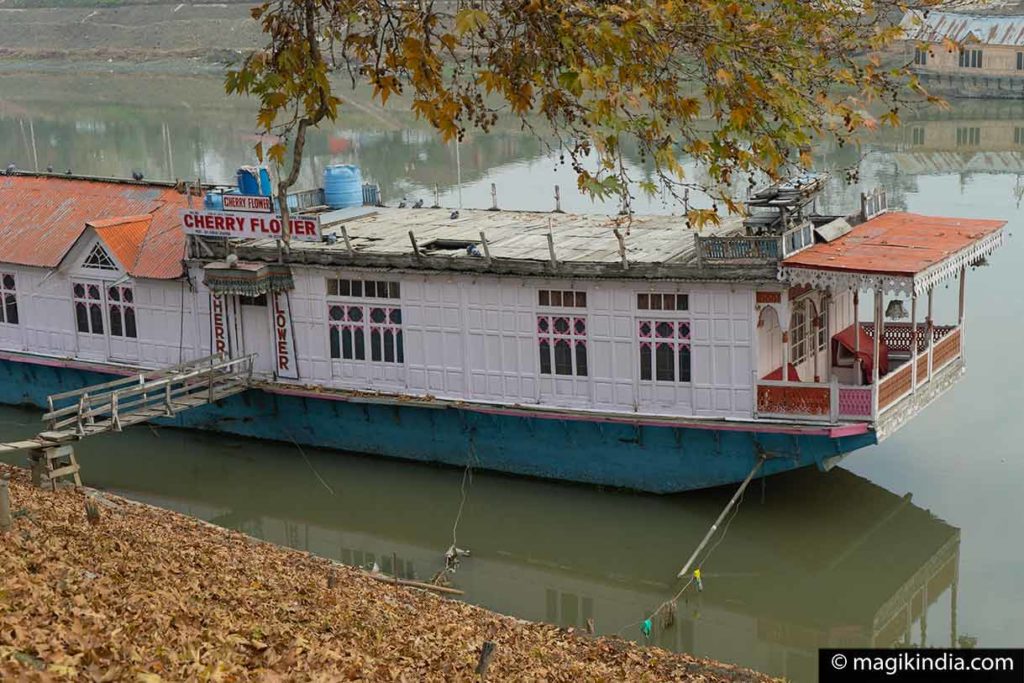
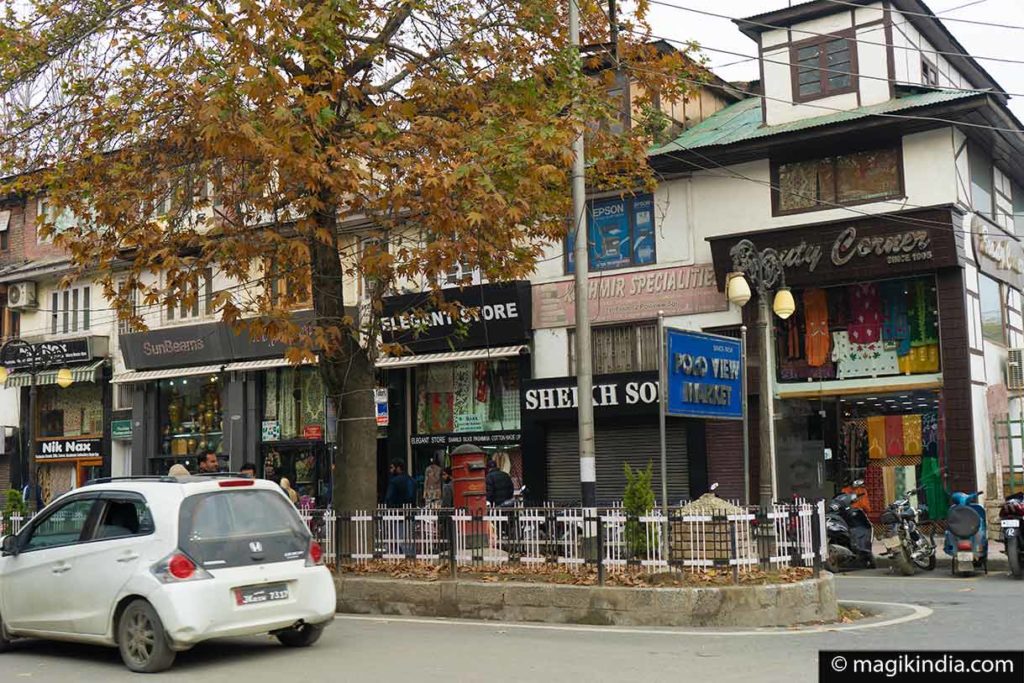
Naqshband Sahib Mosque
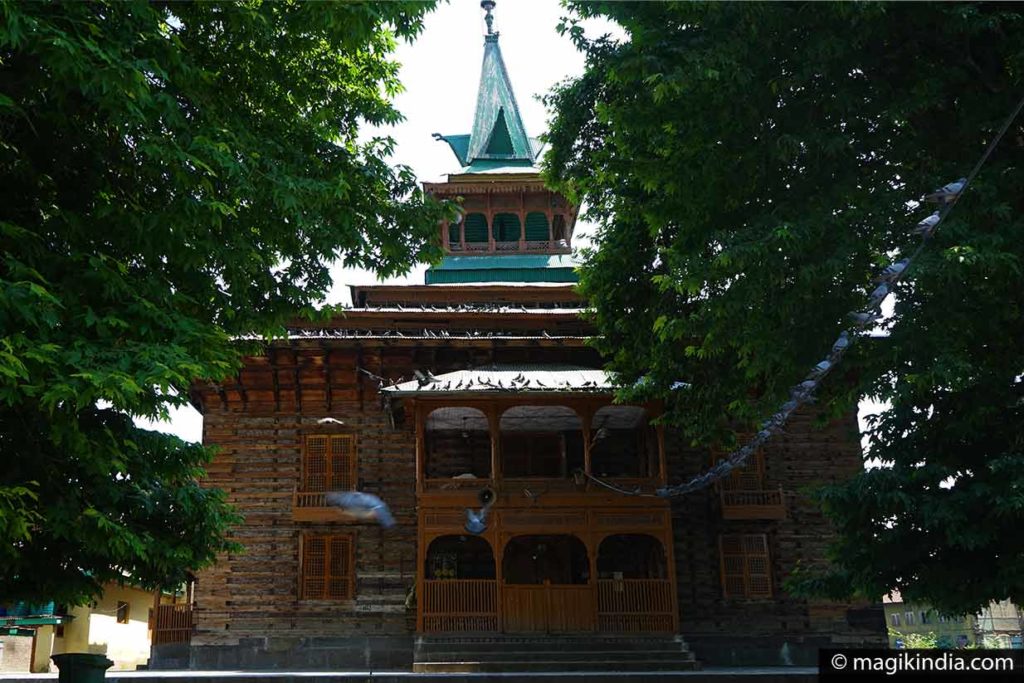
Going further north 4 km from Lal Chowk, there is the revered shrine is also known as ziyarat, “pious visit”.
It was built by the emperor Shah Jahan in the 17th century and is dedicated to the mystic Khwaja Syed Bha-u-Deen Naqshbandm of Boukhara, although he never visited it. One of his descendants is buried here.
It is said that the hair of the prophet Mohammed’s beard (Moi-e-Muqqadas) was kept in this mosque for a while before being sent to the Hazratbal mosque.
The Naqshband mosque is built in pagoda style with conical ceilings and finely carved wood panels in the pinjra-kari lattice-work style. The mosque is unusual in that layers of wood and brick alternate in its construction, a method that helps to dissipate the force of earthquakes.

Shankaracharya Temple
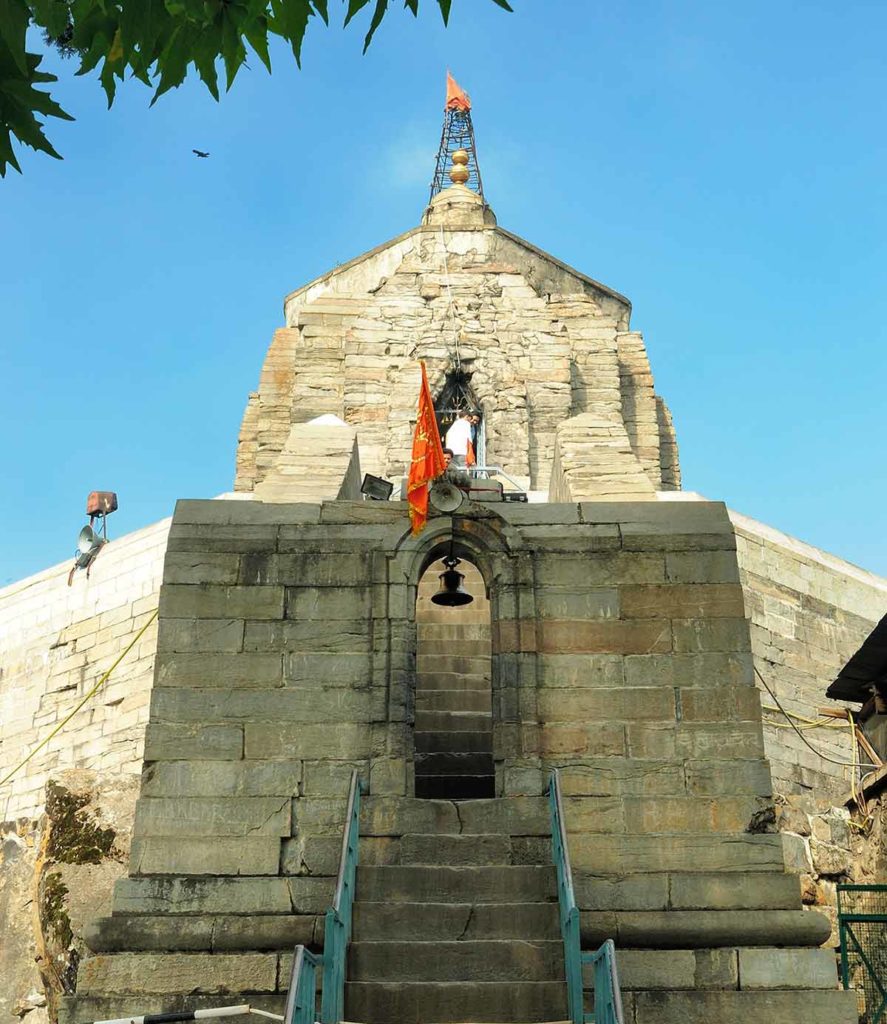
Standing on the top of the Shankaracharya hill which overlooks Dal Lake, this very ancient Hindu temple with its particular architecture is dedicated to Shiva in the form of a Lingam which was placed inside during the Sikh period in the 19th century .
Although the existing structure was probably built in the 9th century, there was a temple on the spot in 200 BCE; the Persians and Jews called it “Sulaiman Bagh-i”, “Solomon’s garden”.
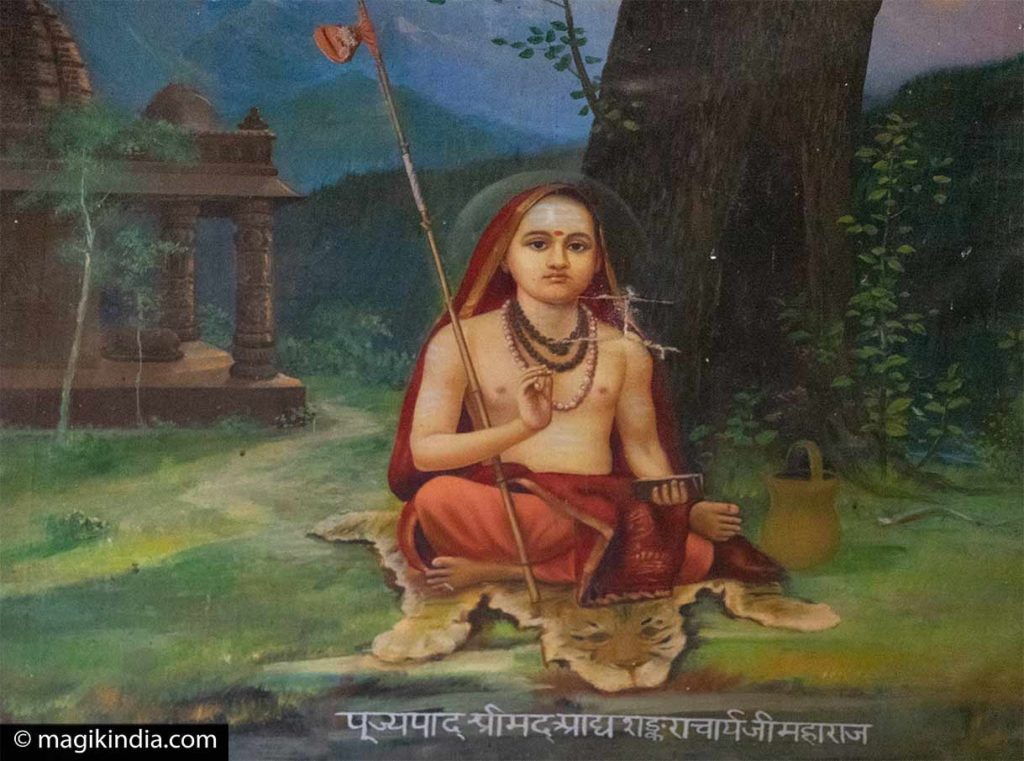
The shrine was visited by Adi Shankara, an 8th-century hindu philosopher and theologian revered as a saint. The temple has been associated with him ever since, whence the name Shankaracharya.
It is also considered a sacred place by Buddhists; some historians say it was a Buddhist temple in the time of Ashoka and was only later turned into a Hindu temple by Adi Shankaracharya.
Hari Parbat Hill
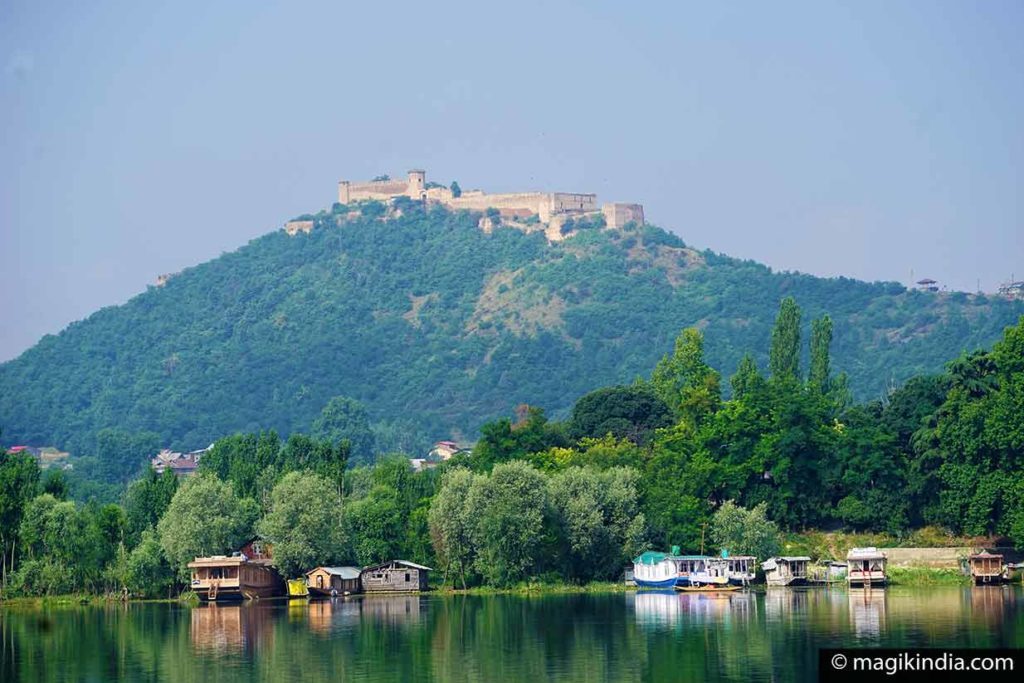
Hari Parbat, known locally as Koh-e-Maran, and by Hindus as Sharika Peeth, is a hill overlooking Srinagar. On the hilltop, visible from Srinagar, stands Fort Durrani.
The first fortifications on the site were built by the Mughal emperor Akbar in 1590. He built the fort’s outer wall and planned to found a new capital called Nager Nagor inside it, but the project never came to fruition. The existing fort was built in 1808 in the reign of Shah Shuja Durrani. It is occupied by the Indian army but has recently been opened to the public again.
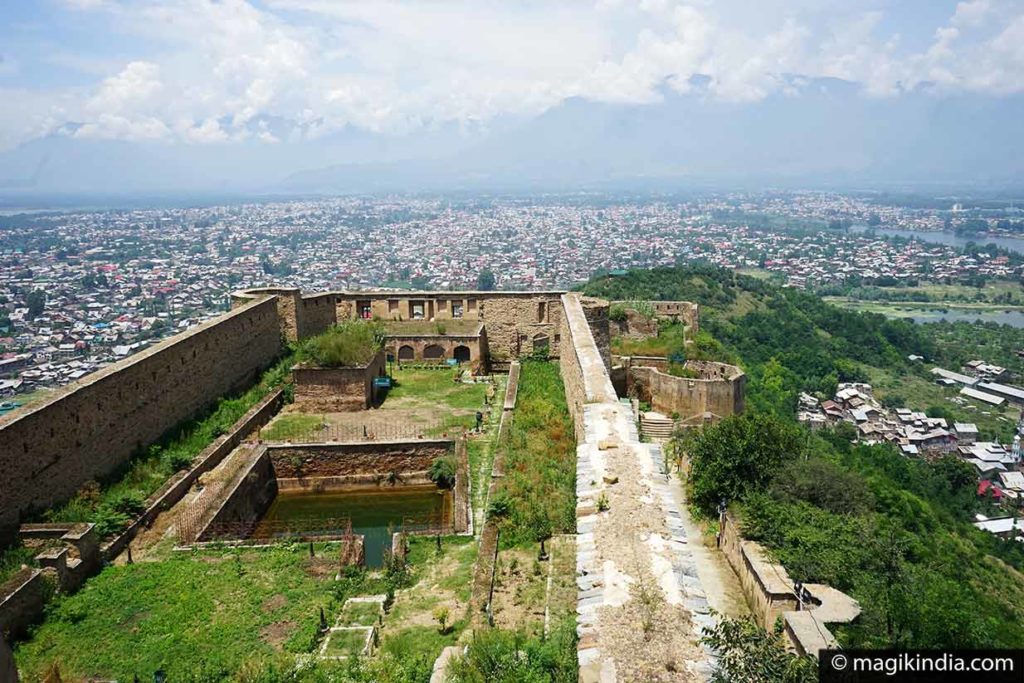
The hill is regarded as sacred by Kashmir’s Hindus owing to the presence on the west side of the hill of a temple to Jagadamba Sharika Bhagawati (an aspect of the goddess Durga), represented with 18 arms. Legend has it that Hari Parbat was the island where Jagadamba Sharika and Vishnu vanquished the lake demon Jalodabhava.
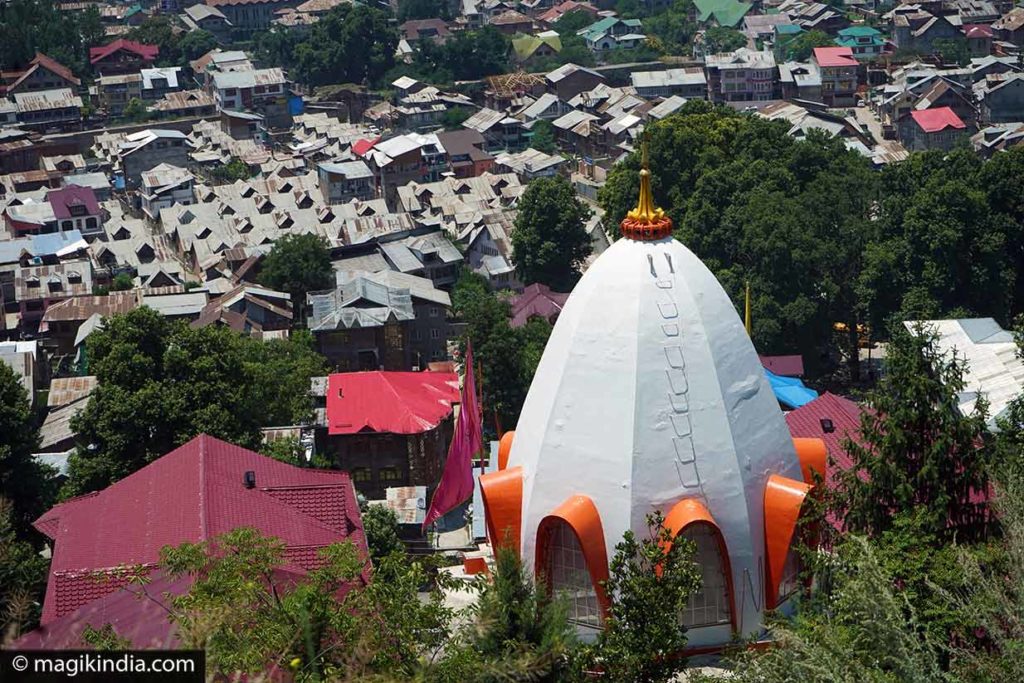
Hari Parbat also has special significance for Sikhs. On the south side of the ramparts is one of Kashmir’s most important gurudwaras (Sikh places of worship). People believe that Guru Har Gobind, the sixth Sikh guru, stayed there for several days, imbuing the place with his holy presence.
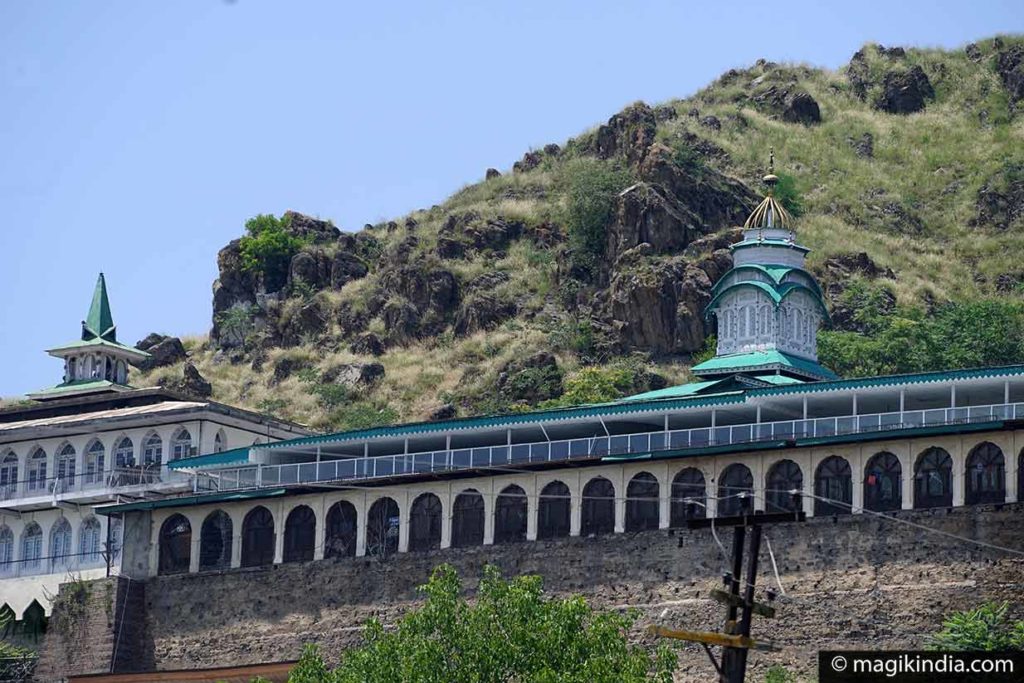
Below it, halfway up the hill, stands the much revered Hamza Makhdoom shrine, dedicated to Makhdoom Sahib, also known as Sultan Hazrat, a major Sufi saint. The two-storey structure is visited not only by Muslims but by people of all faiths.
Pari Mahal
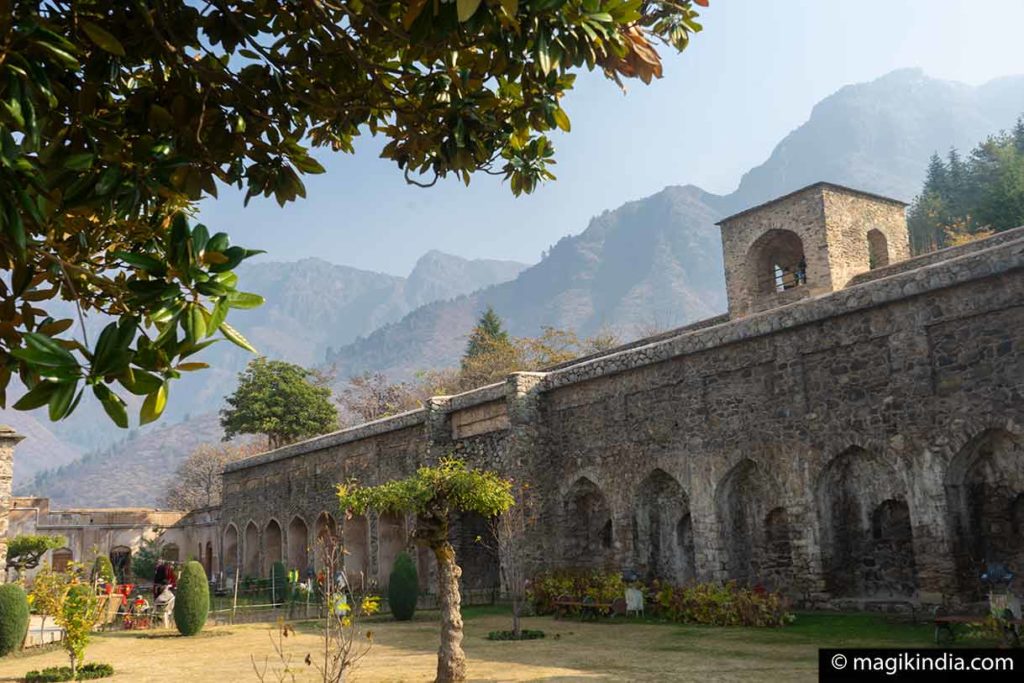
Pari Mahal or “abode of the fairies” is a terraced garden and folly at the top of the Zabarwan range, to the southwest of Dal Lake and overlooking Srinagar. The garden’s main asset is it splendid view of Dal Lake and Srinagar.
It was built in the time of the Mughal emperor Shah Jahan and the architectural style is Islamic.
Avantiswamin Temple (30km)
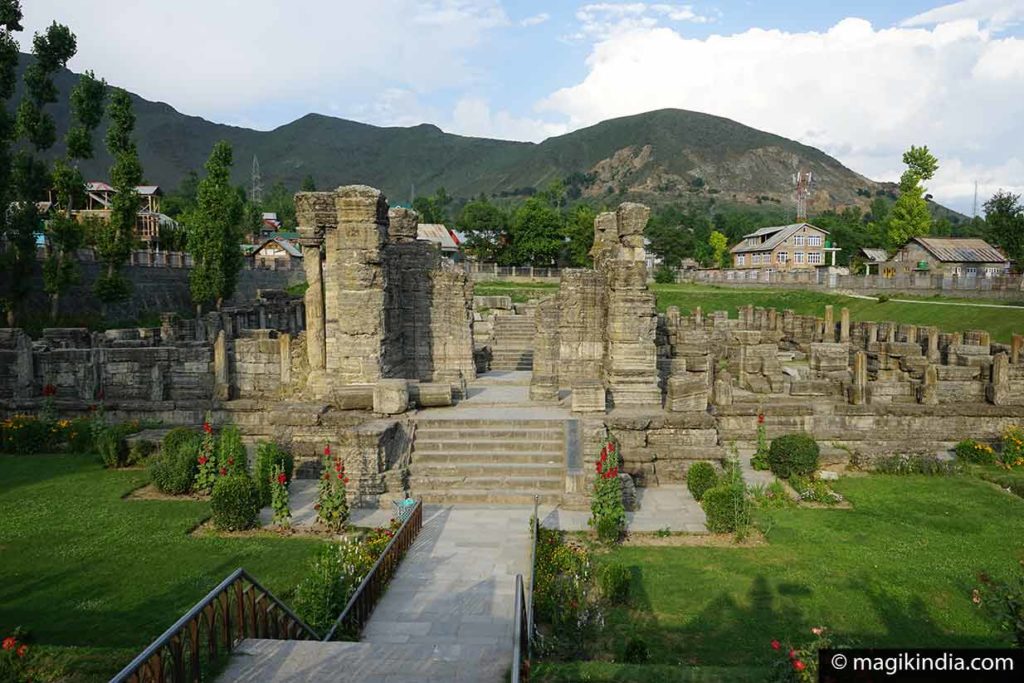
This very old Hindu temple dedicated to Vishnu, 30km on the banks of the Jelum, was built by the king Avantirvarnam in the late 9th century BCE.
Although it is in ruins now it still has some fine frescoes representing various Hindu gods and apsaras (semi-goddesses) and Greek style colonnades that are well worth seeing. It is built in Pancayatana form, i.e. it has a central shrine room surrounded by four lesser shrines.
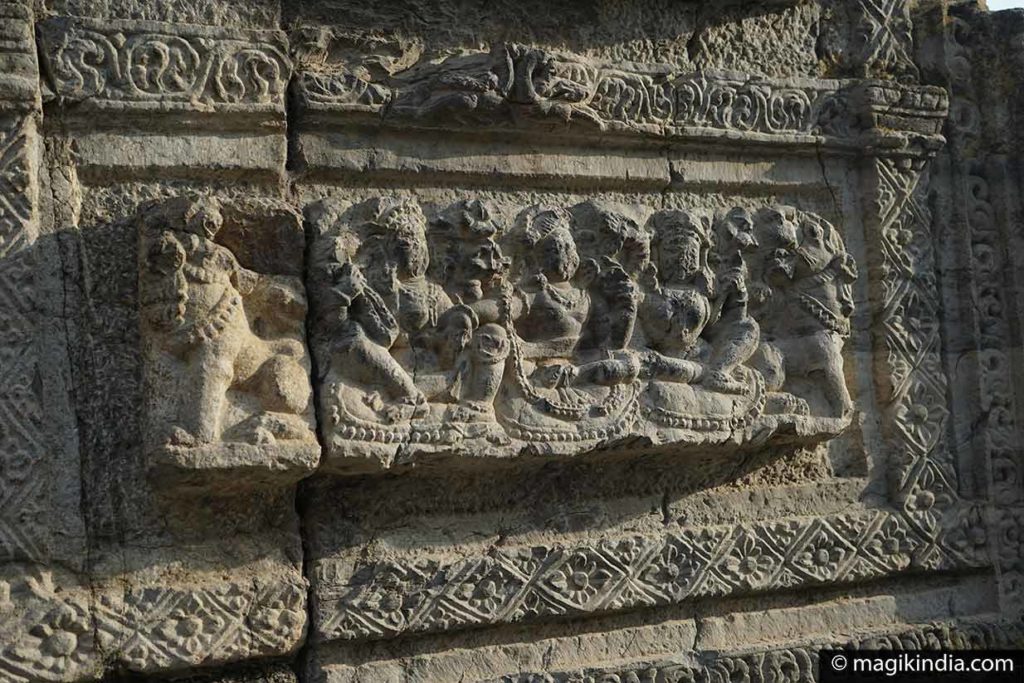
It is thought that the four lesser shrines were to Samkarshana, Aniruddha, Pradyumna and Vasudeva – avatars of Vishnu – and that the main image represented Chatur-vyuha, one of the forms of Vishnu
